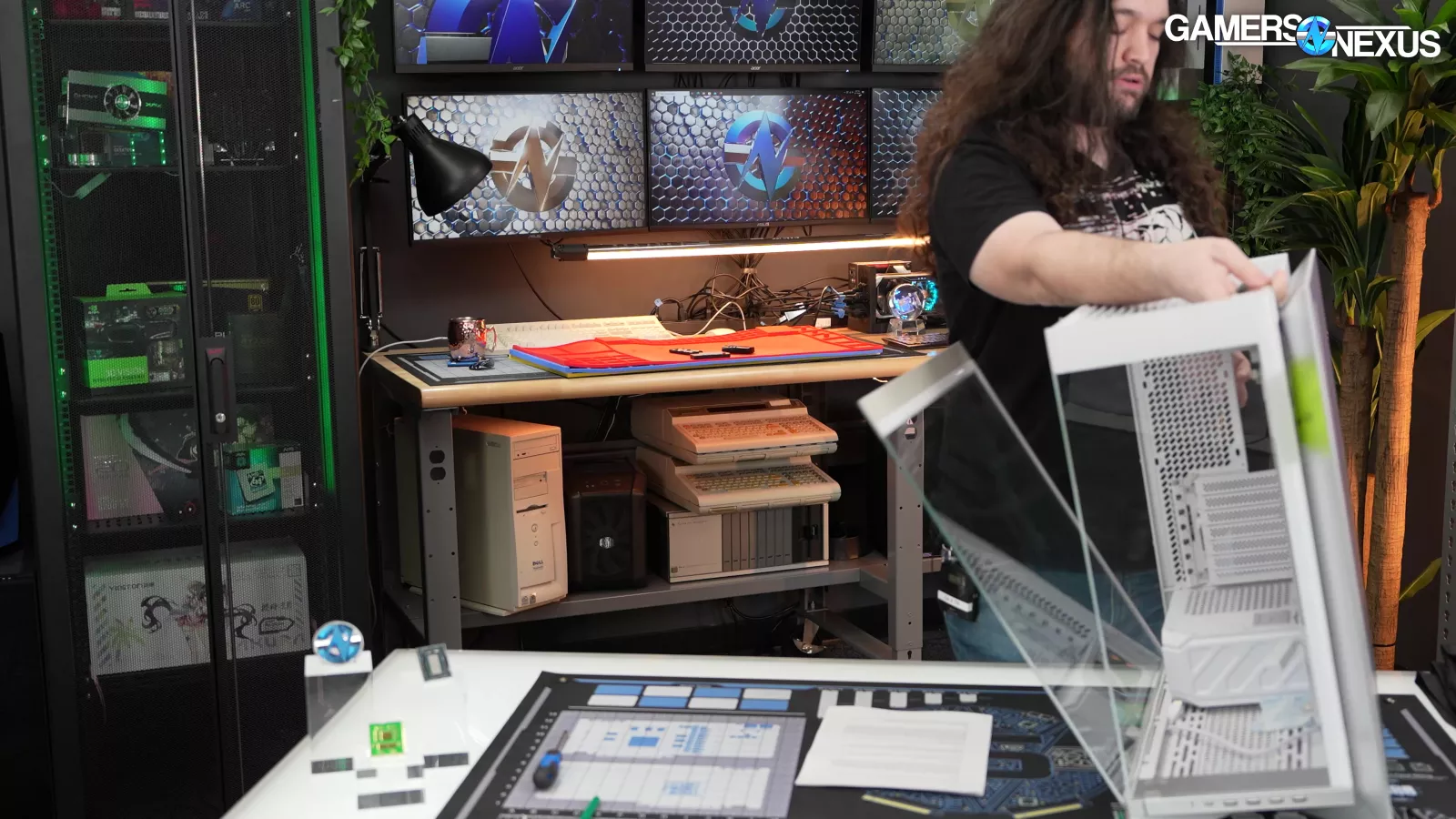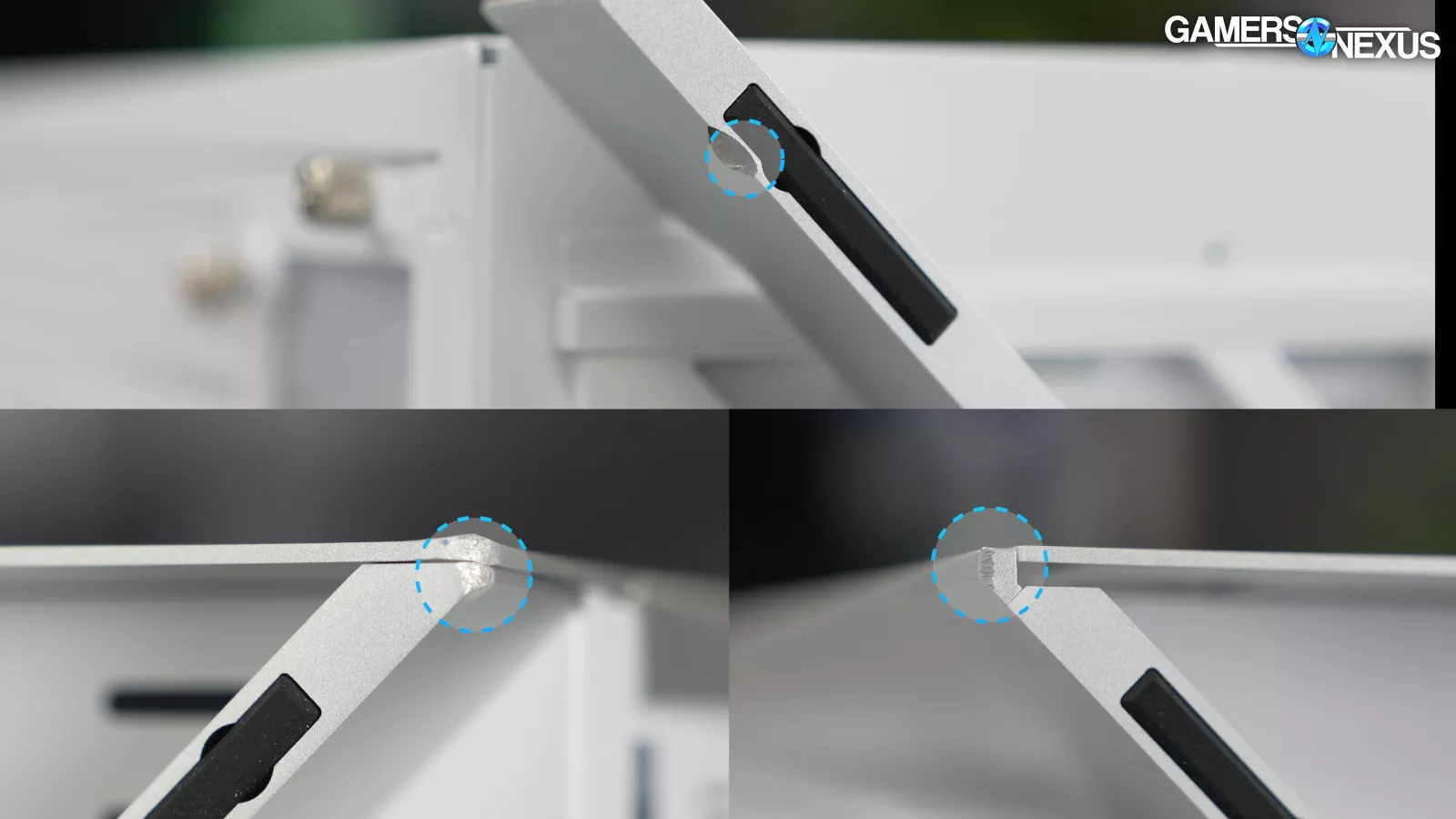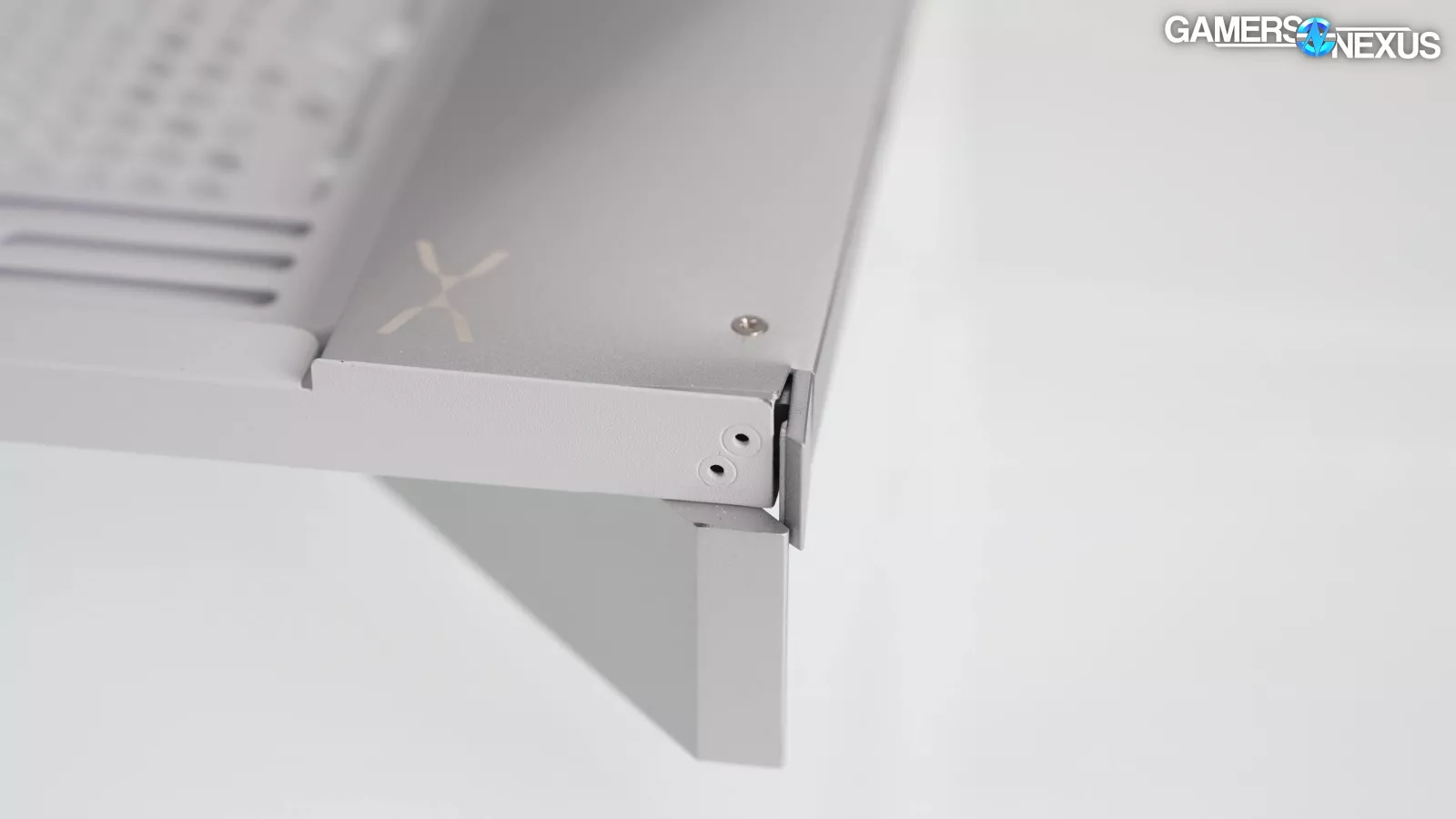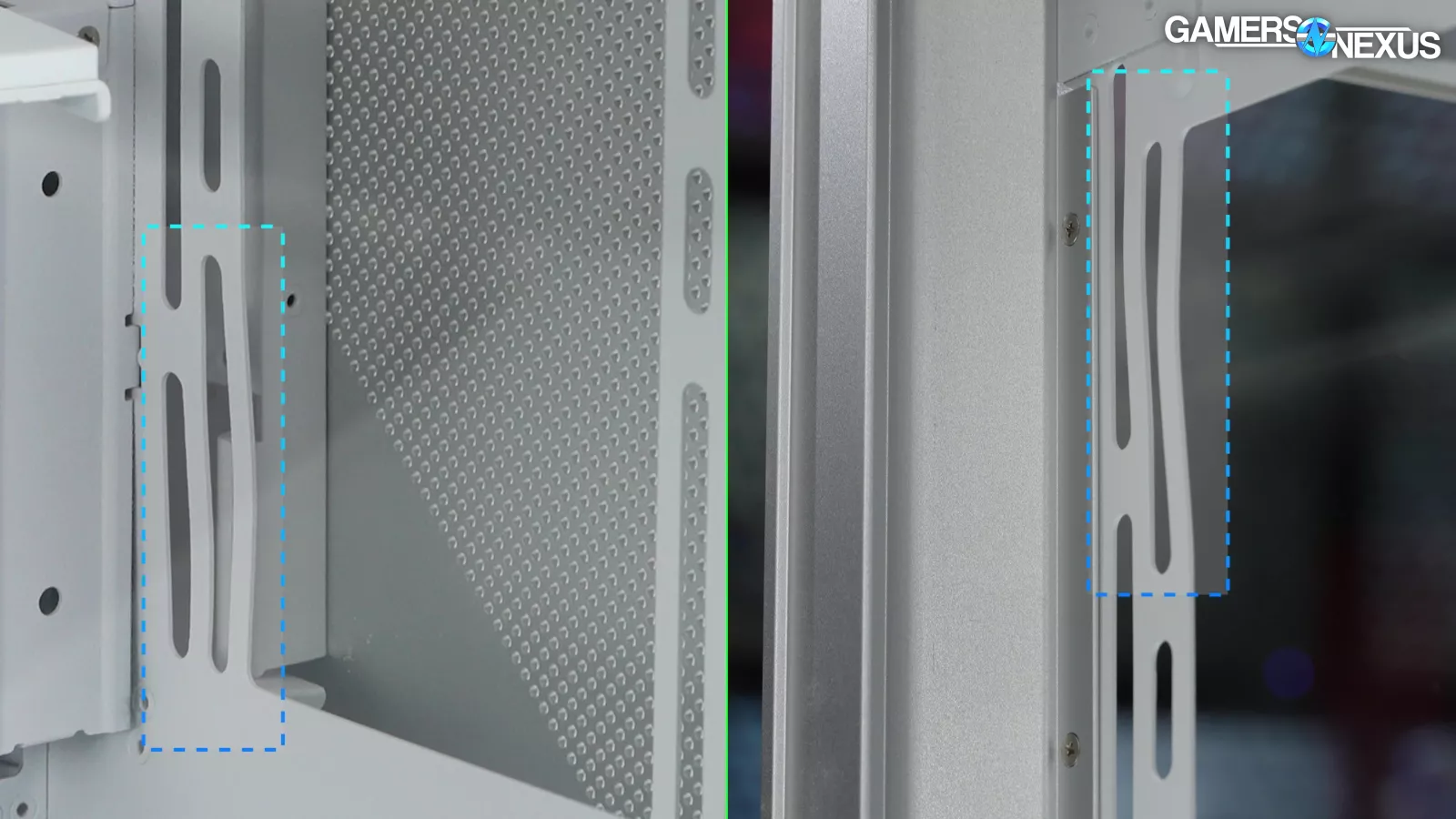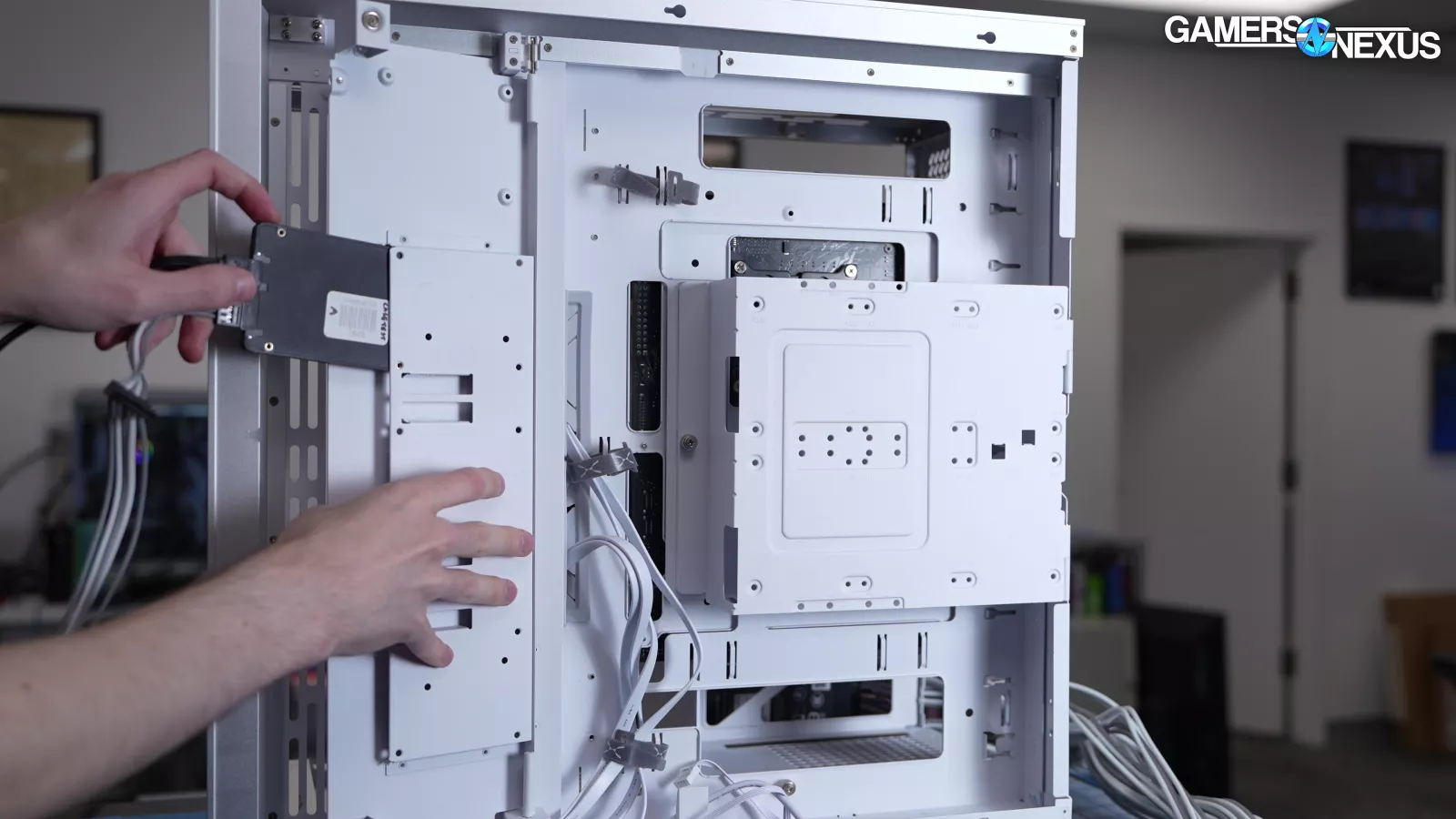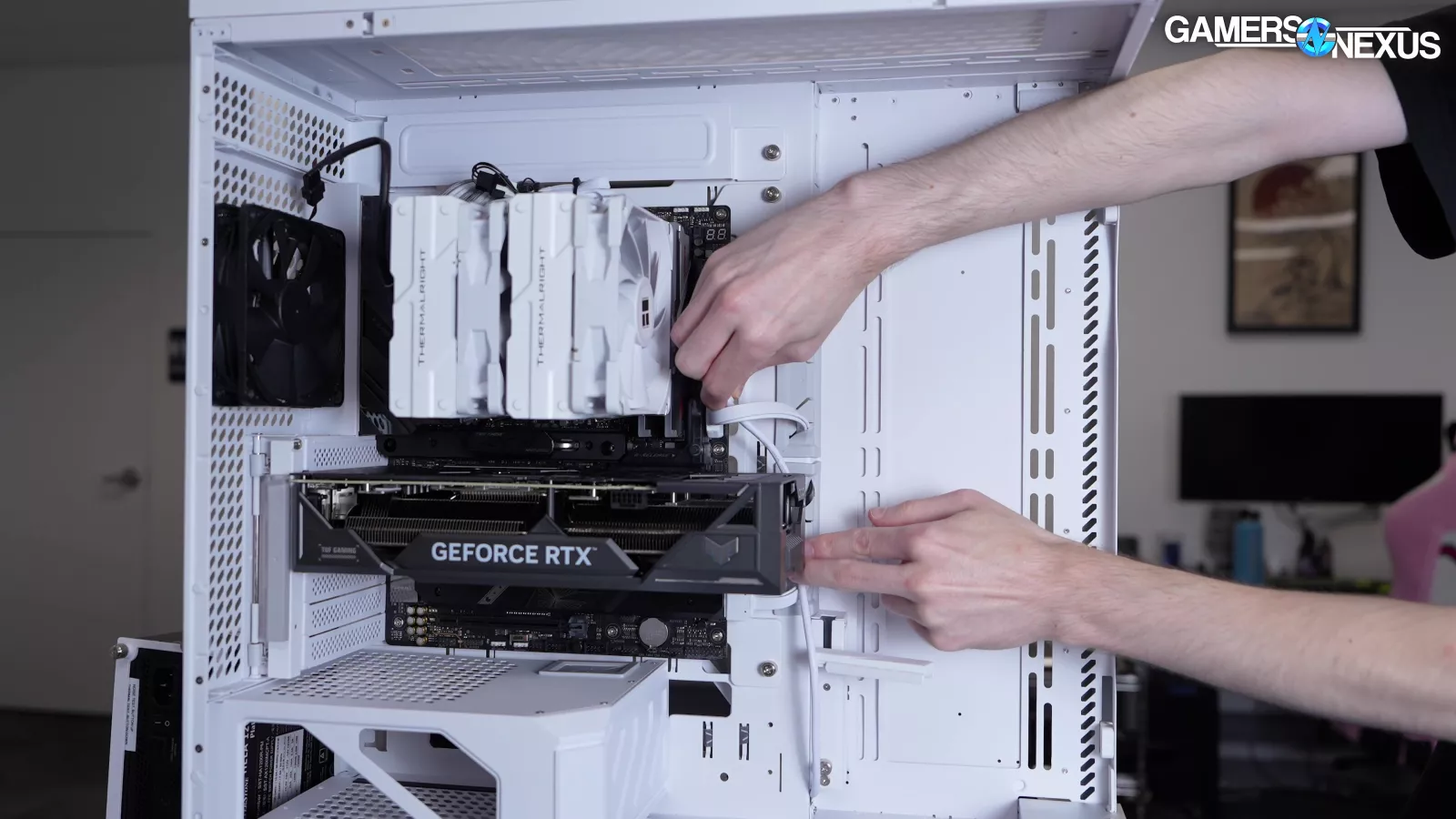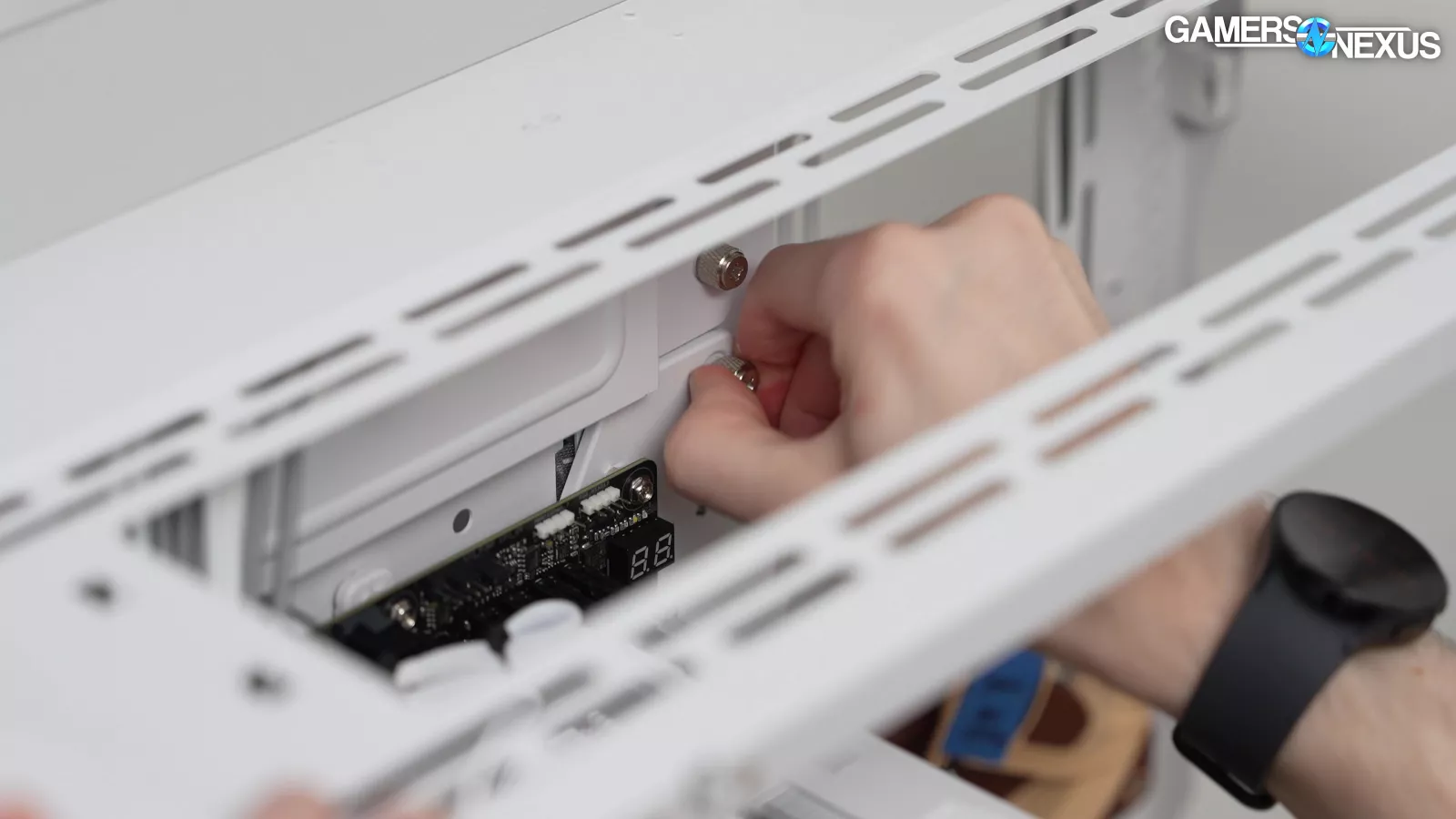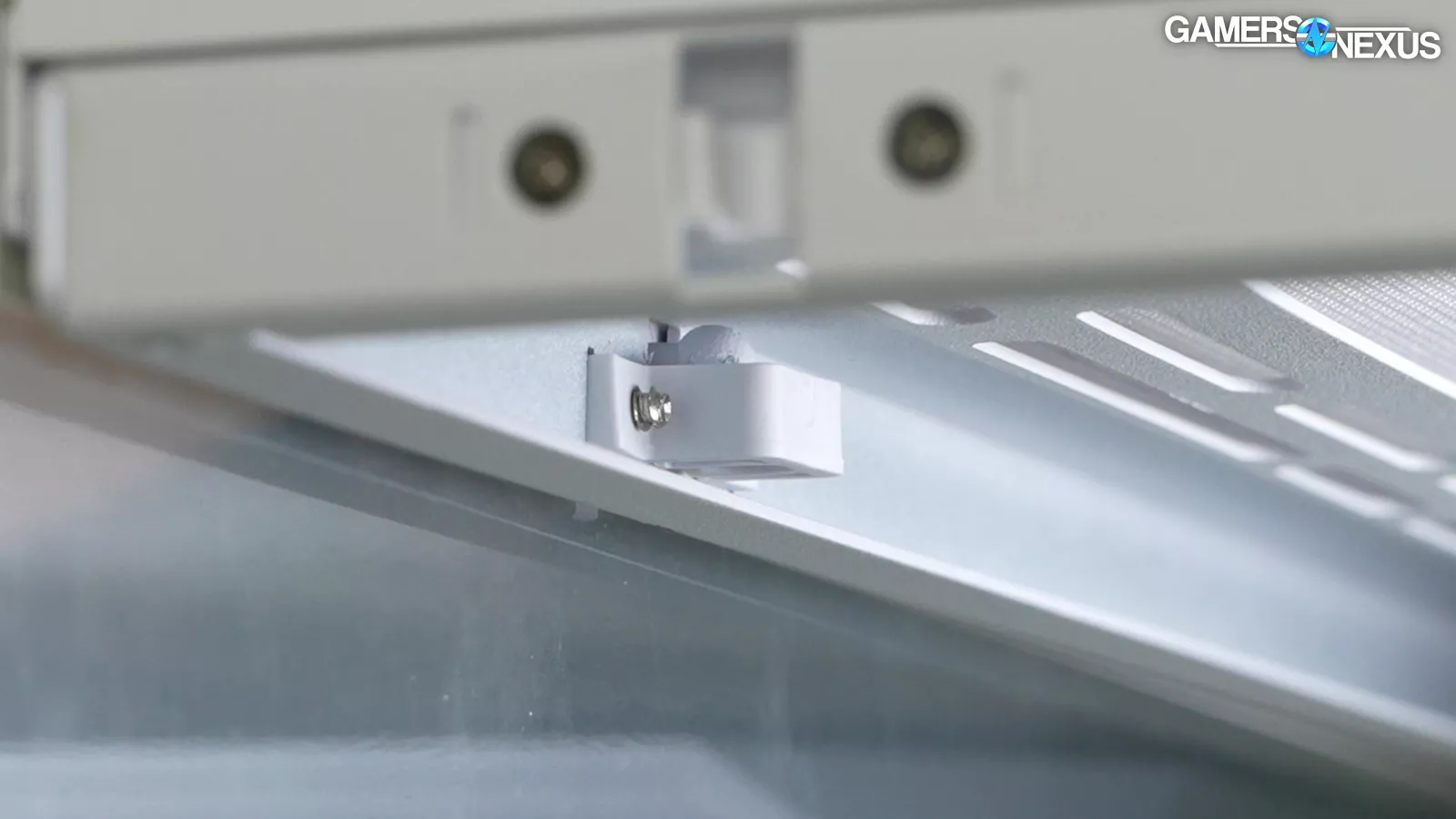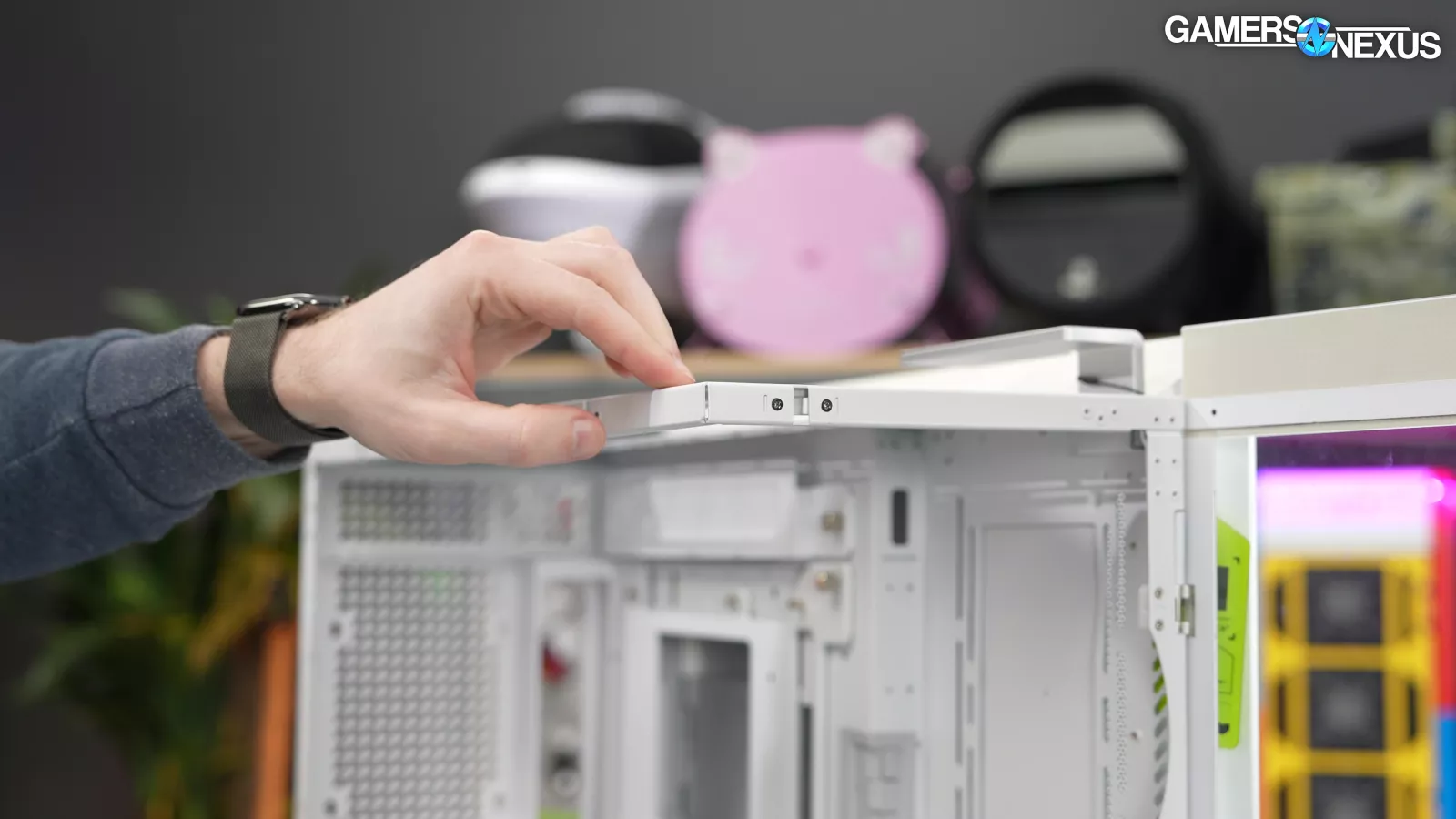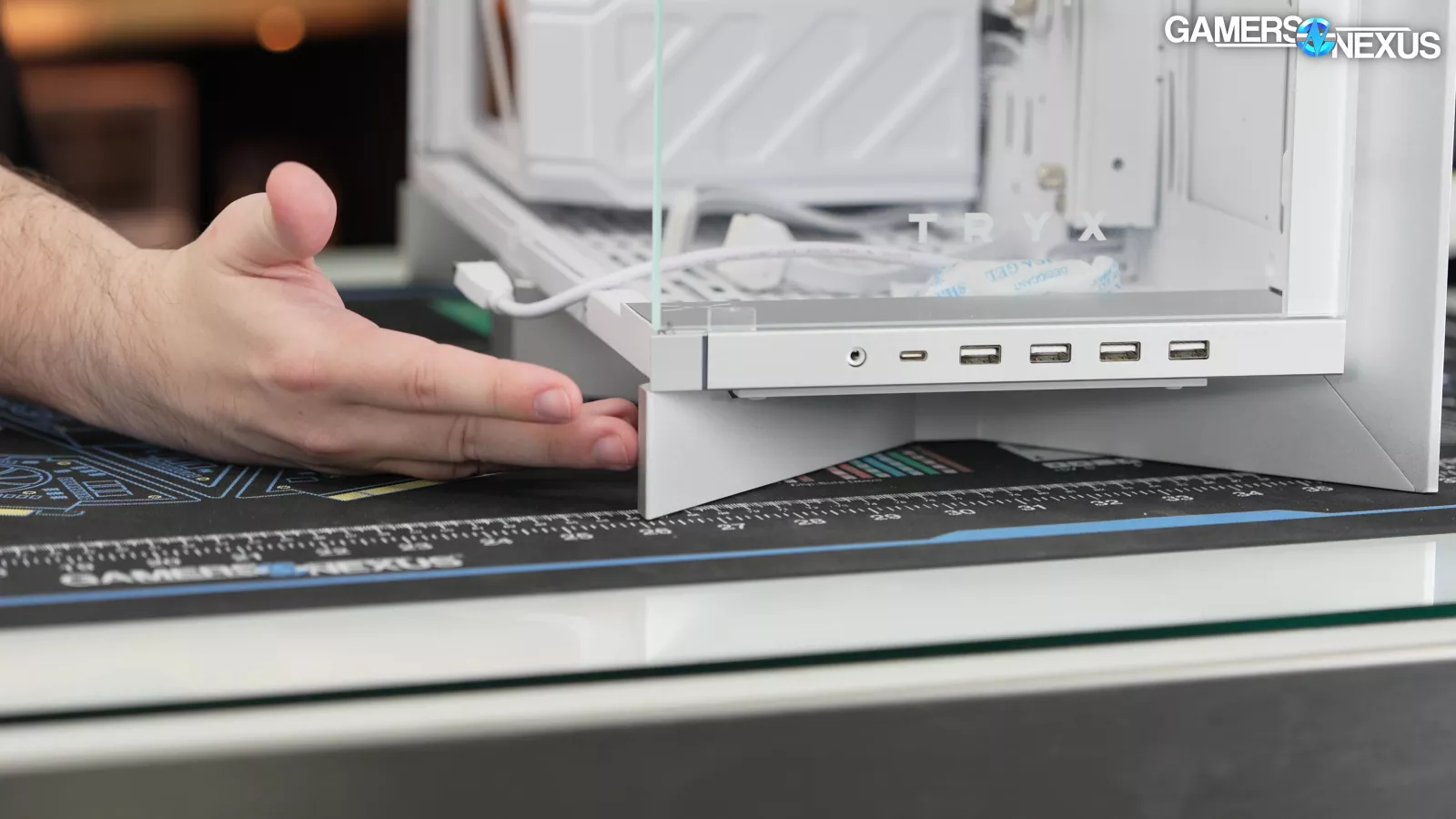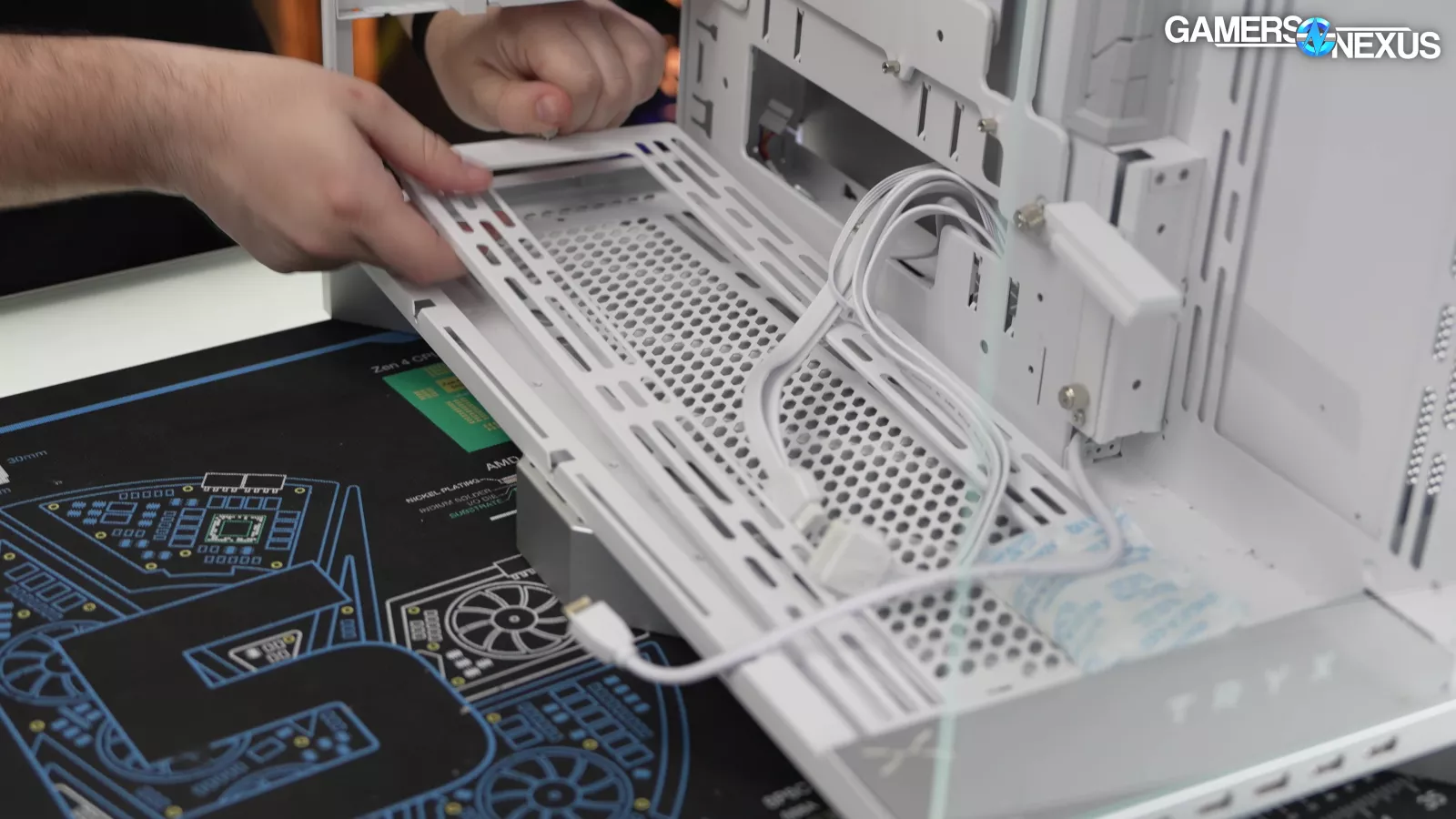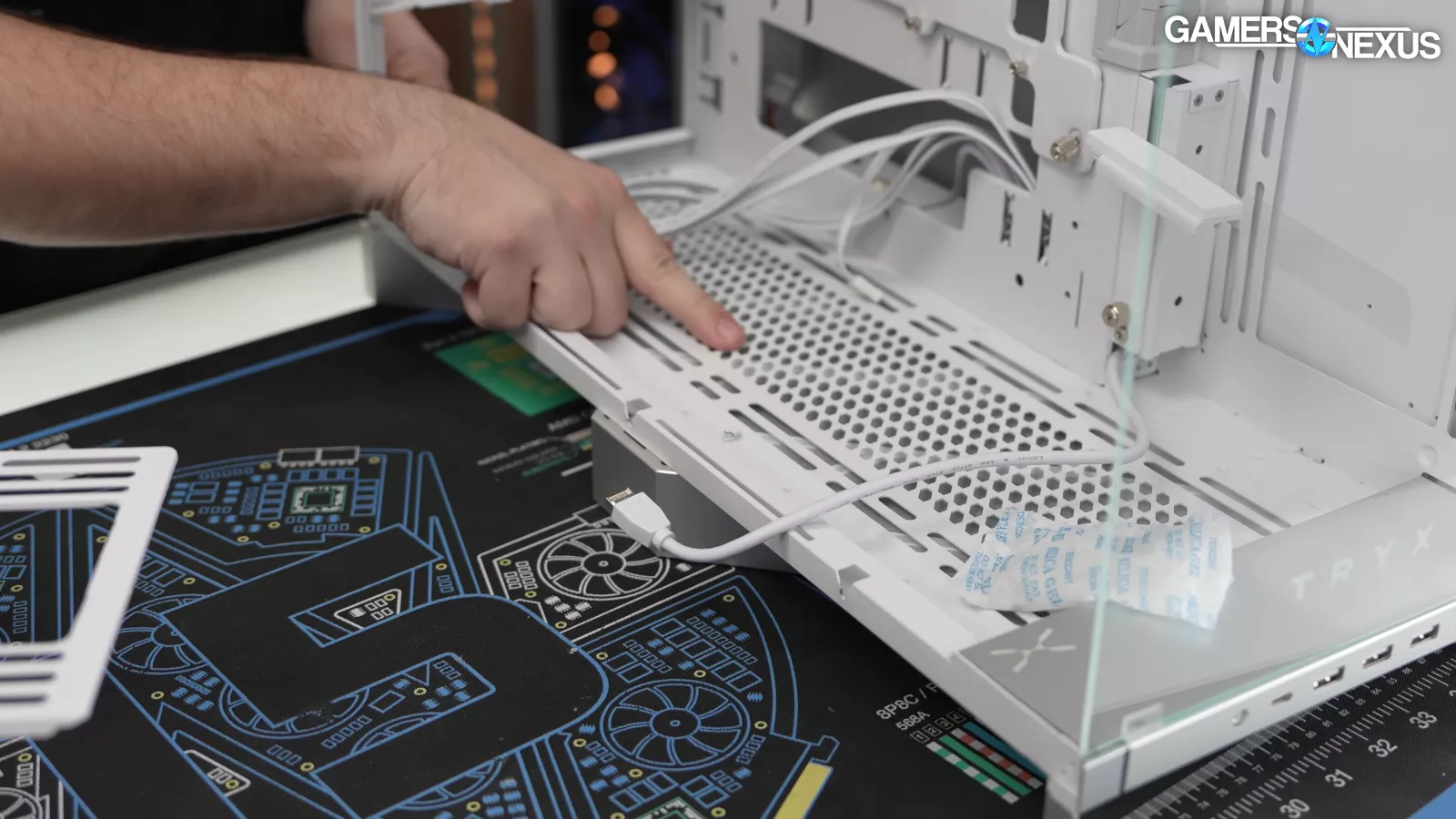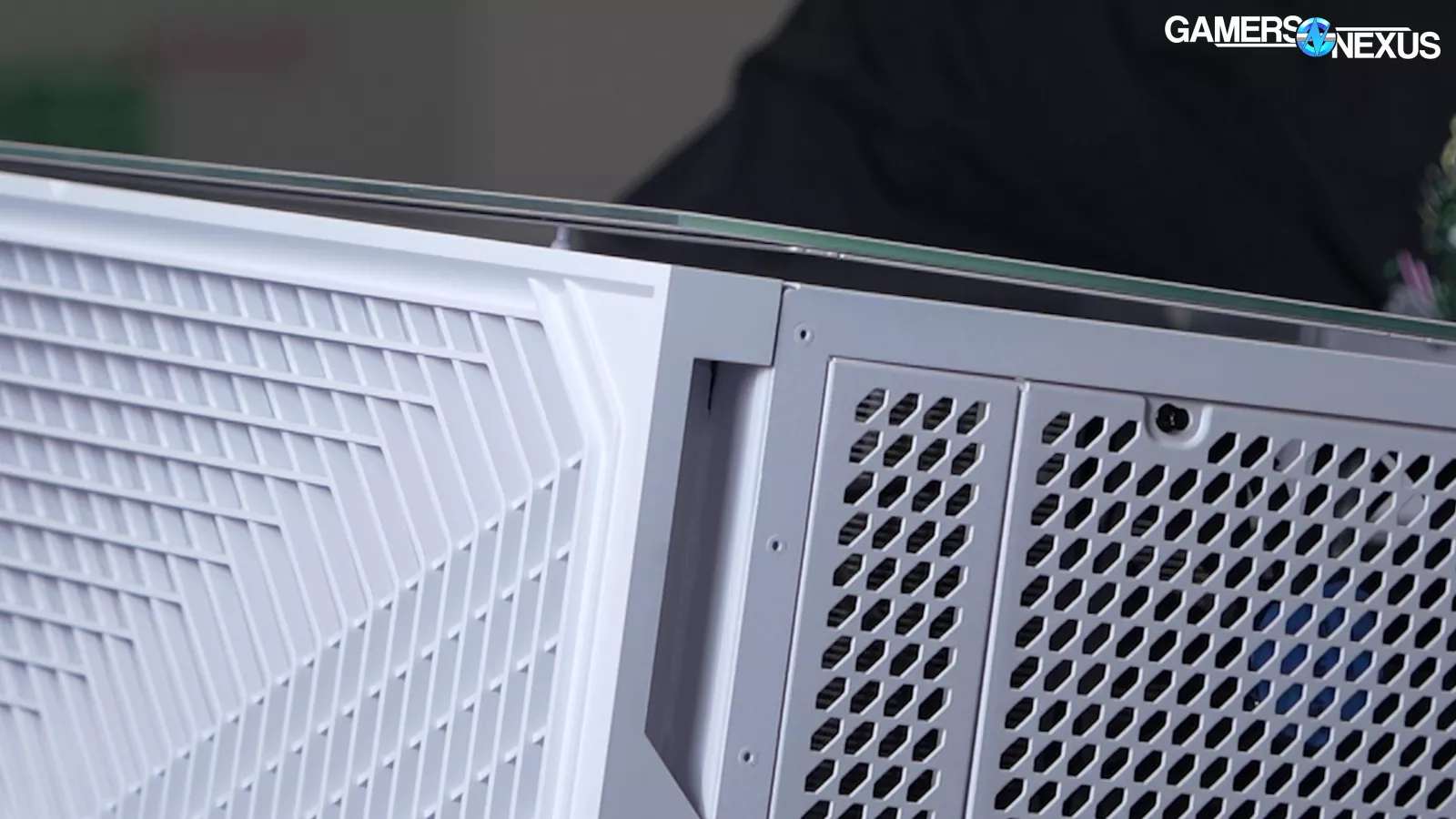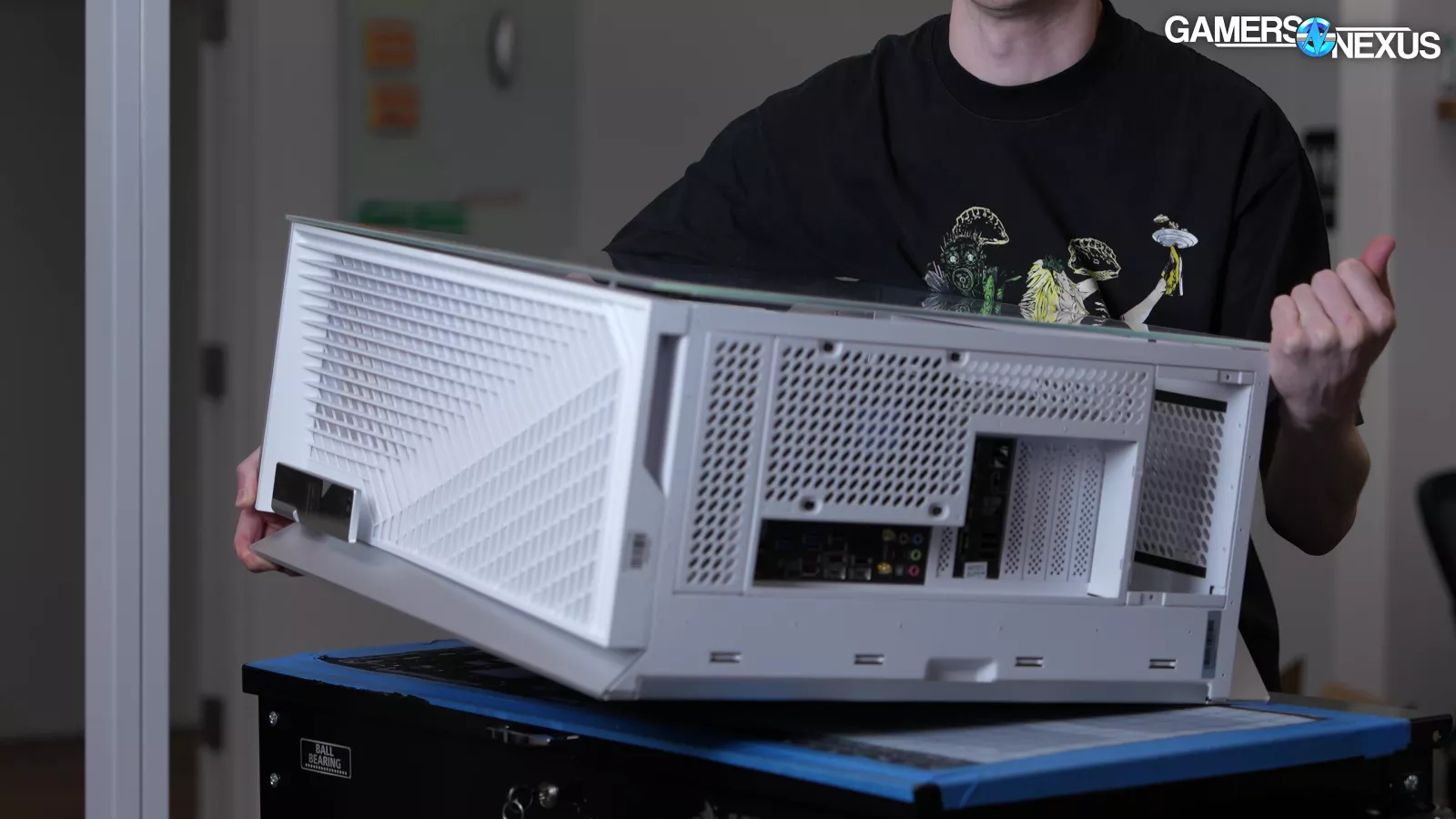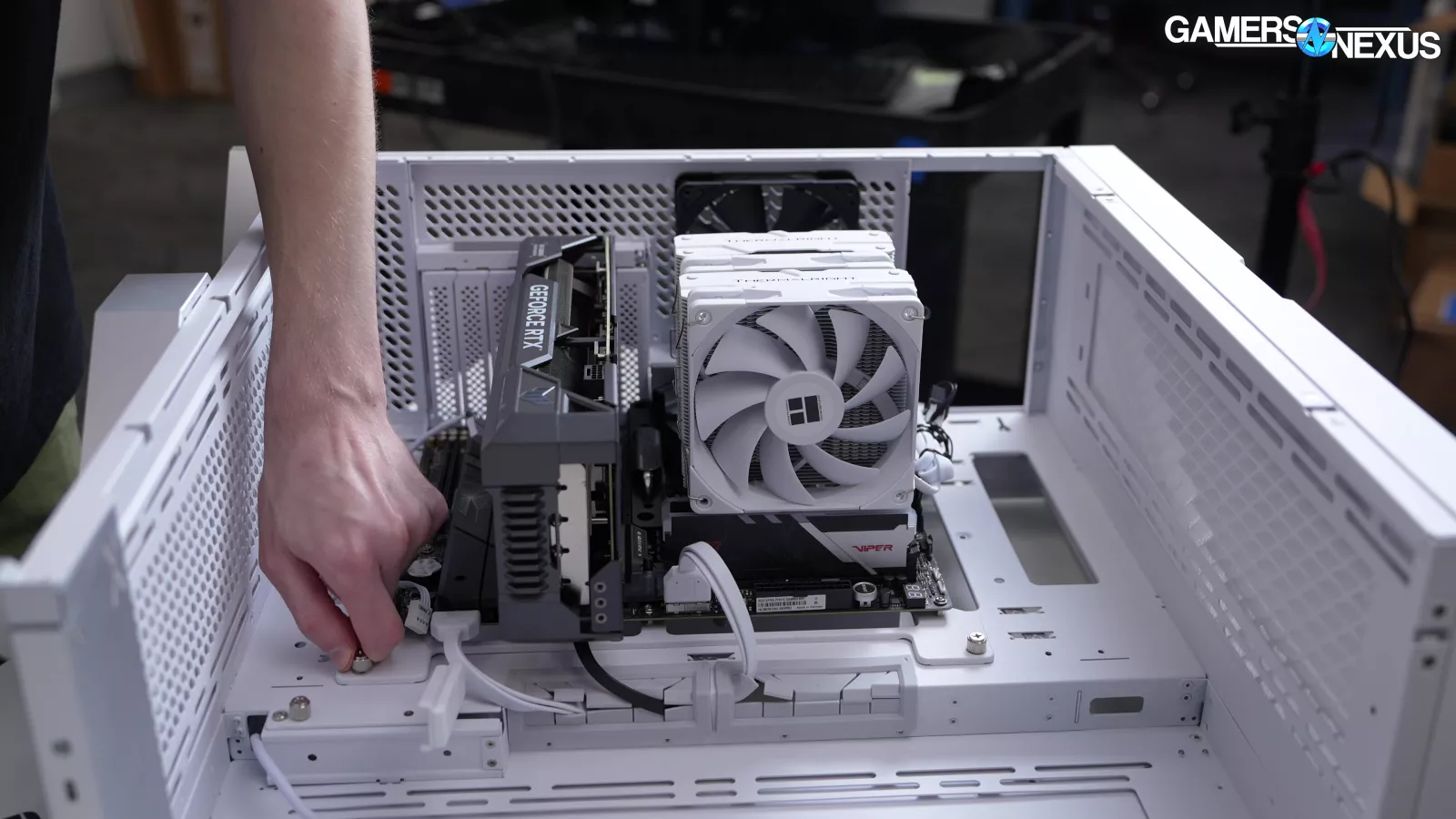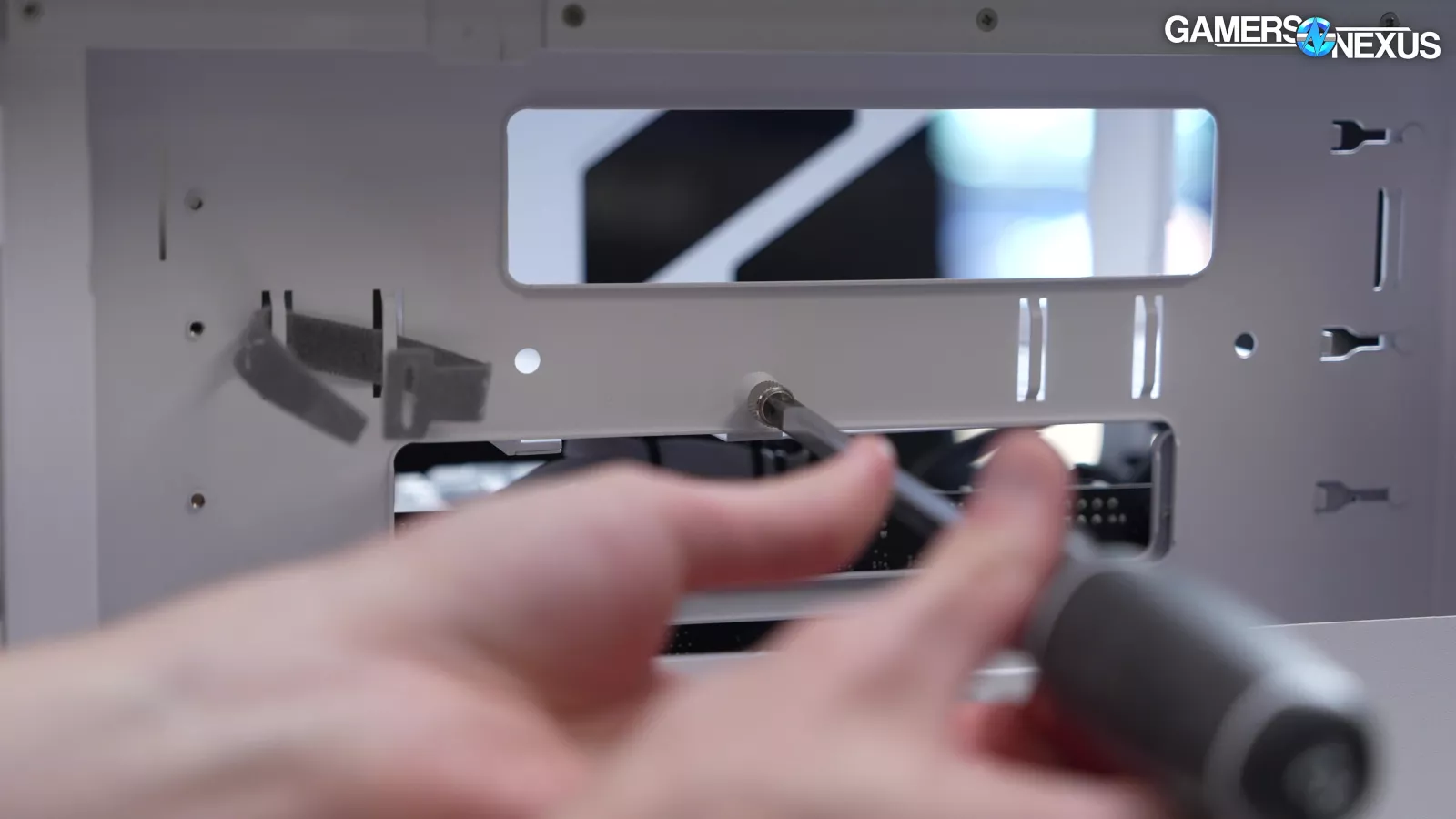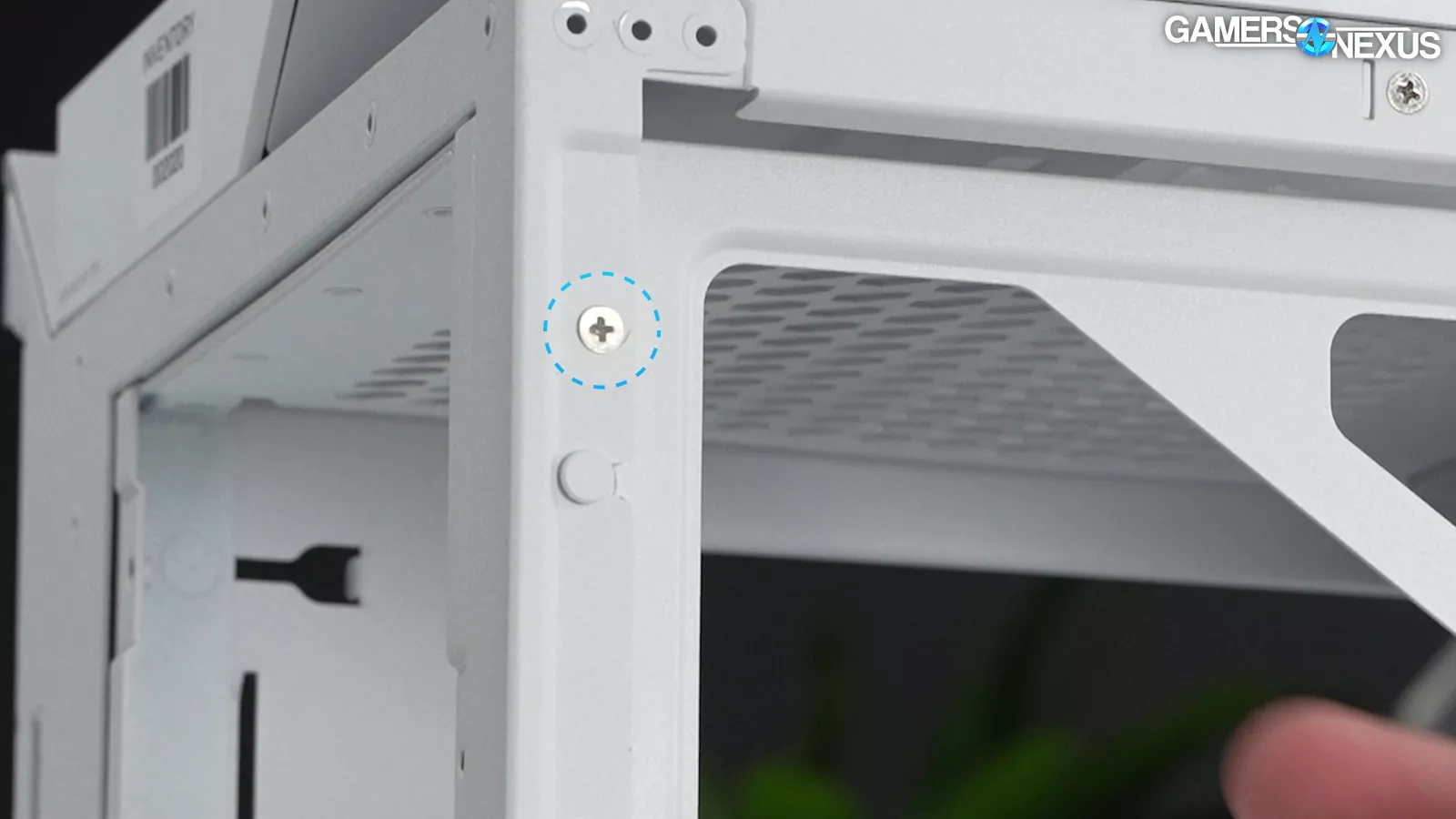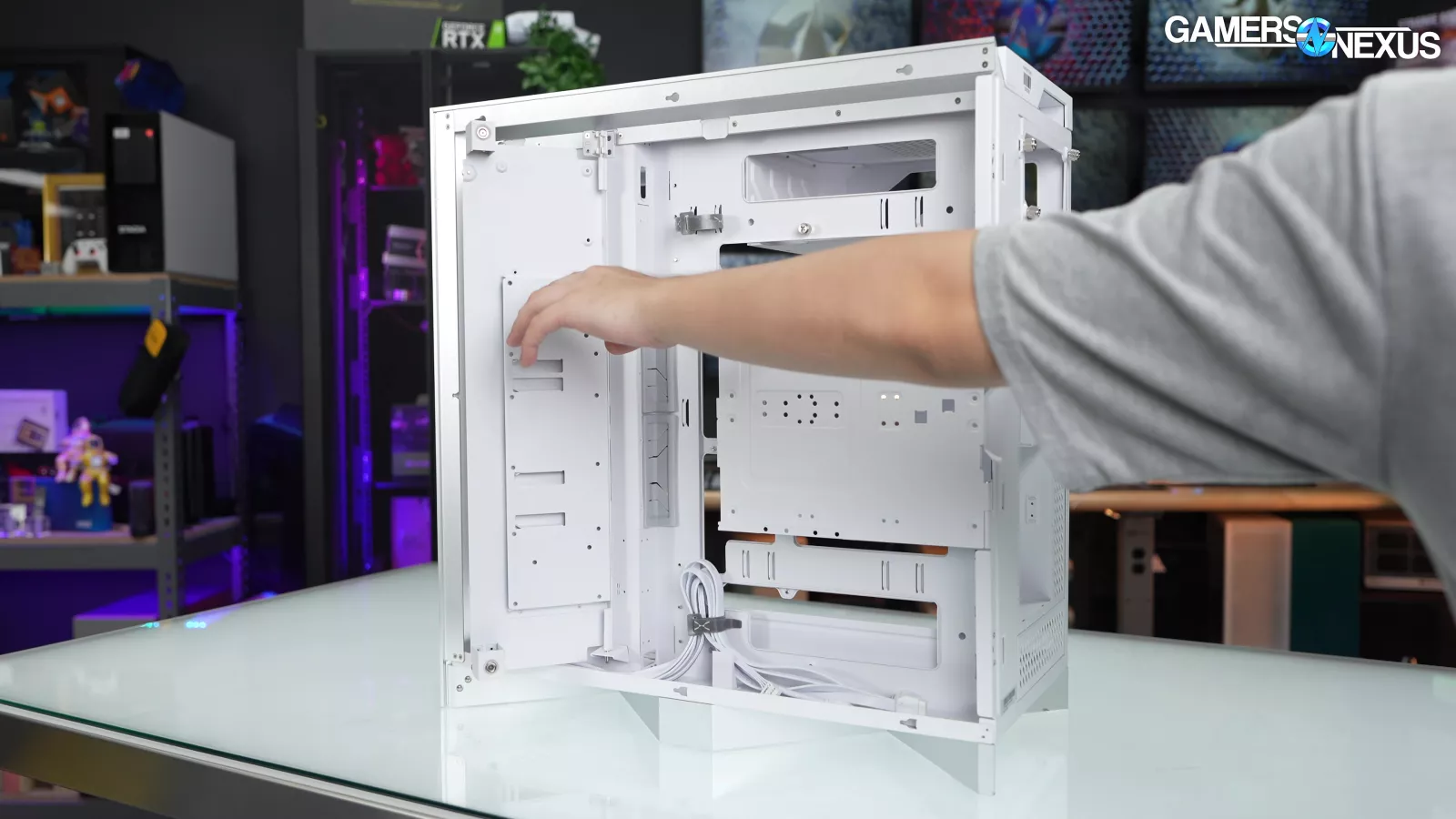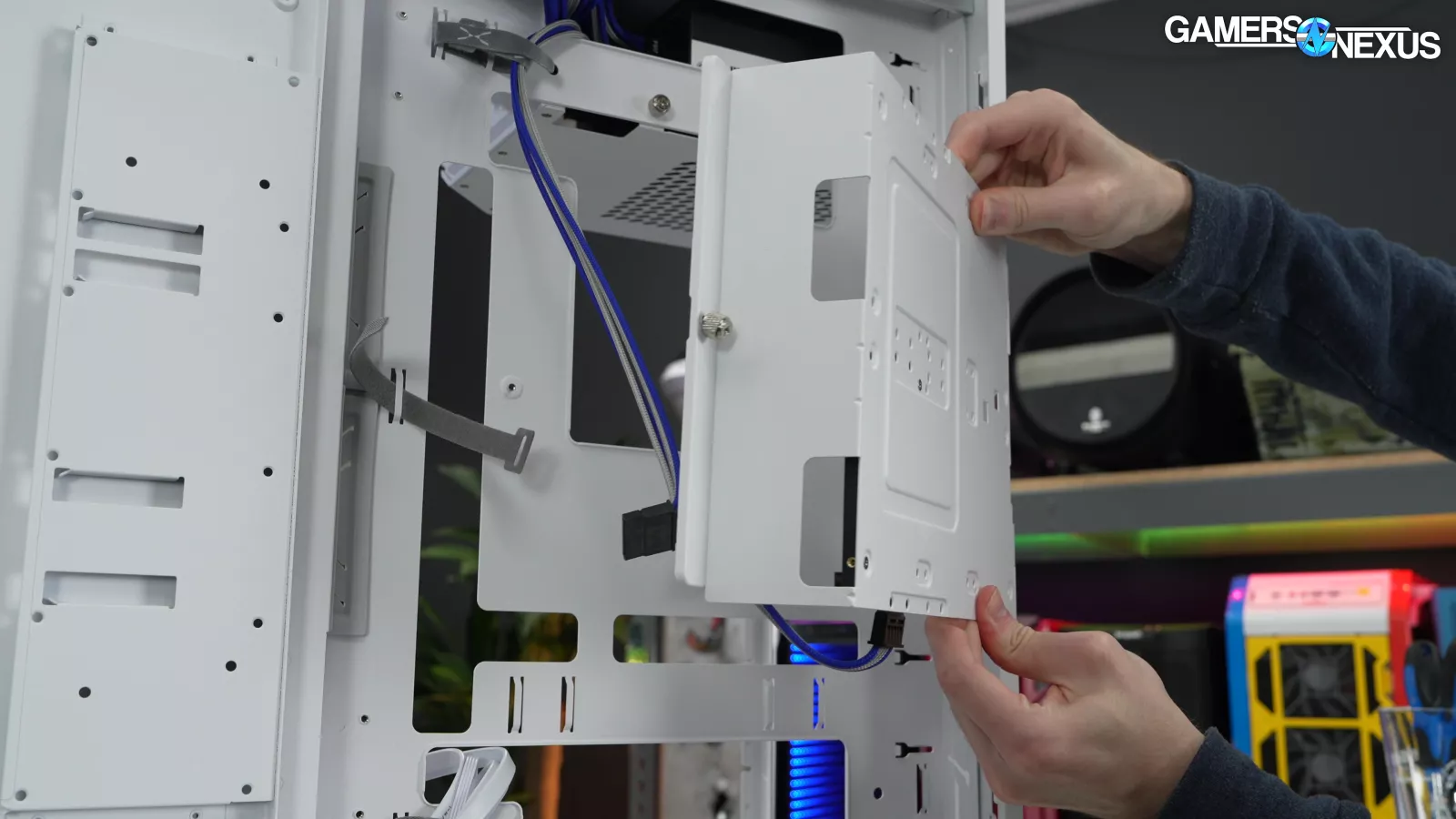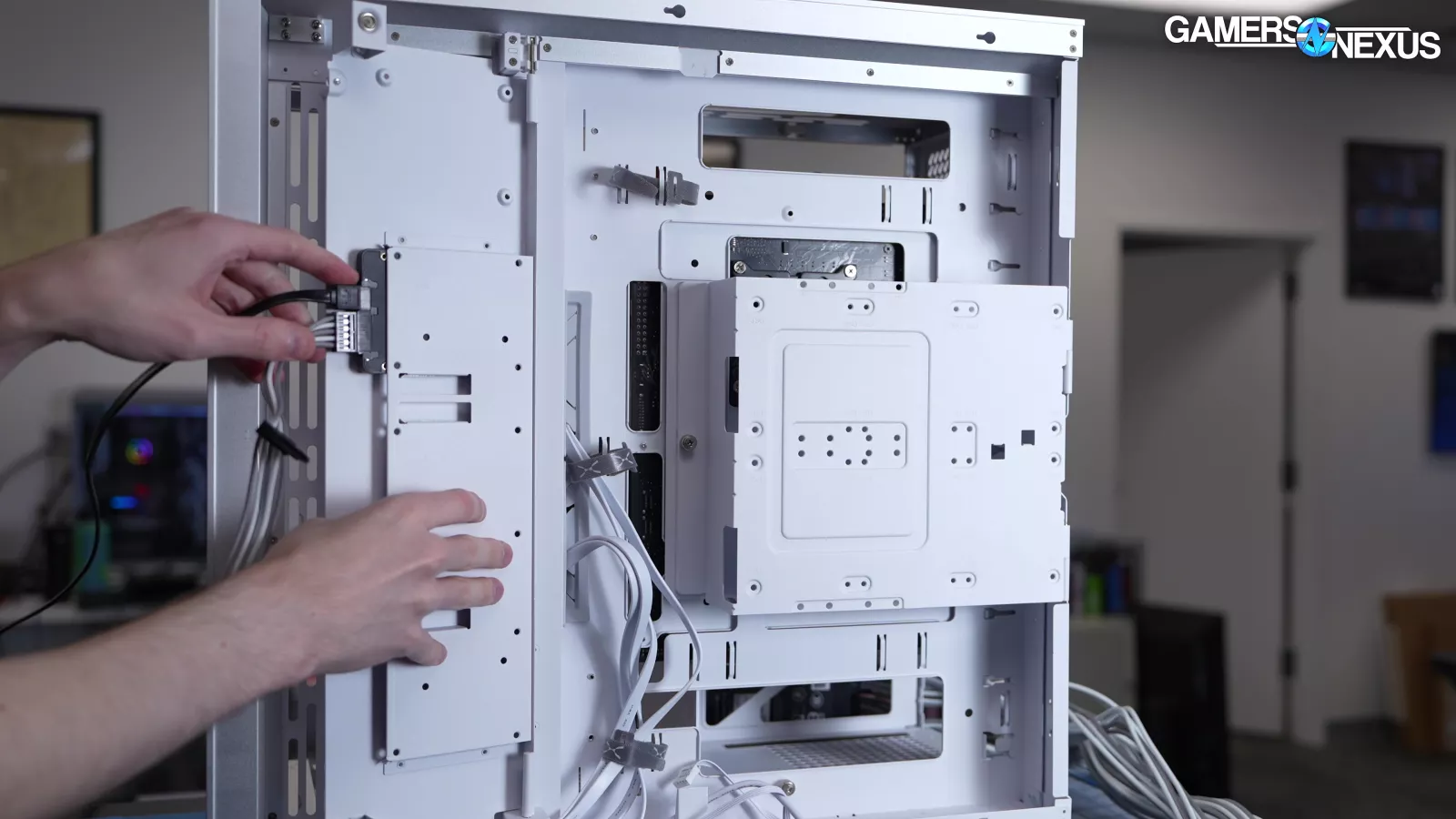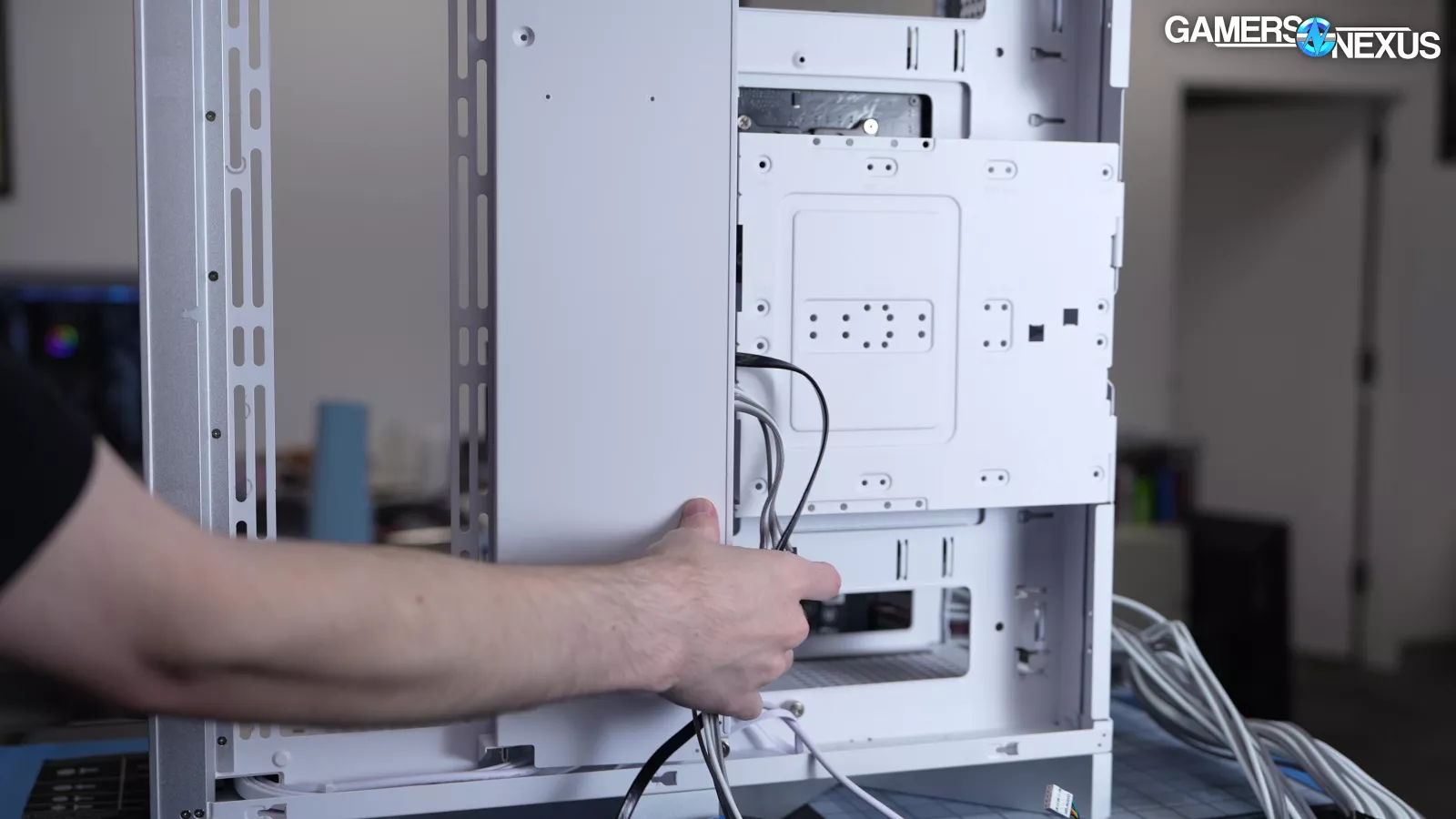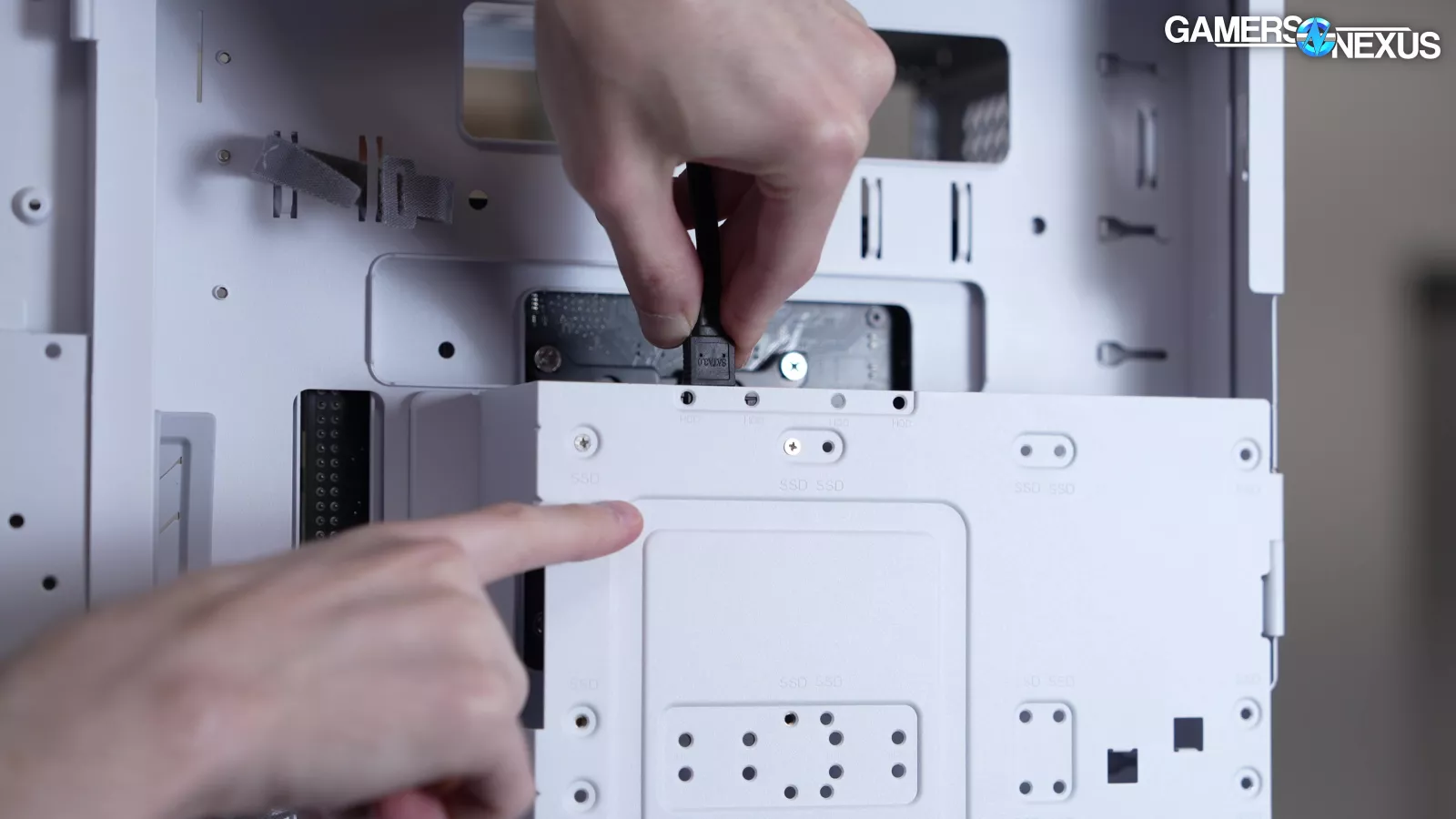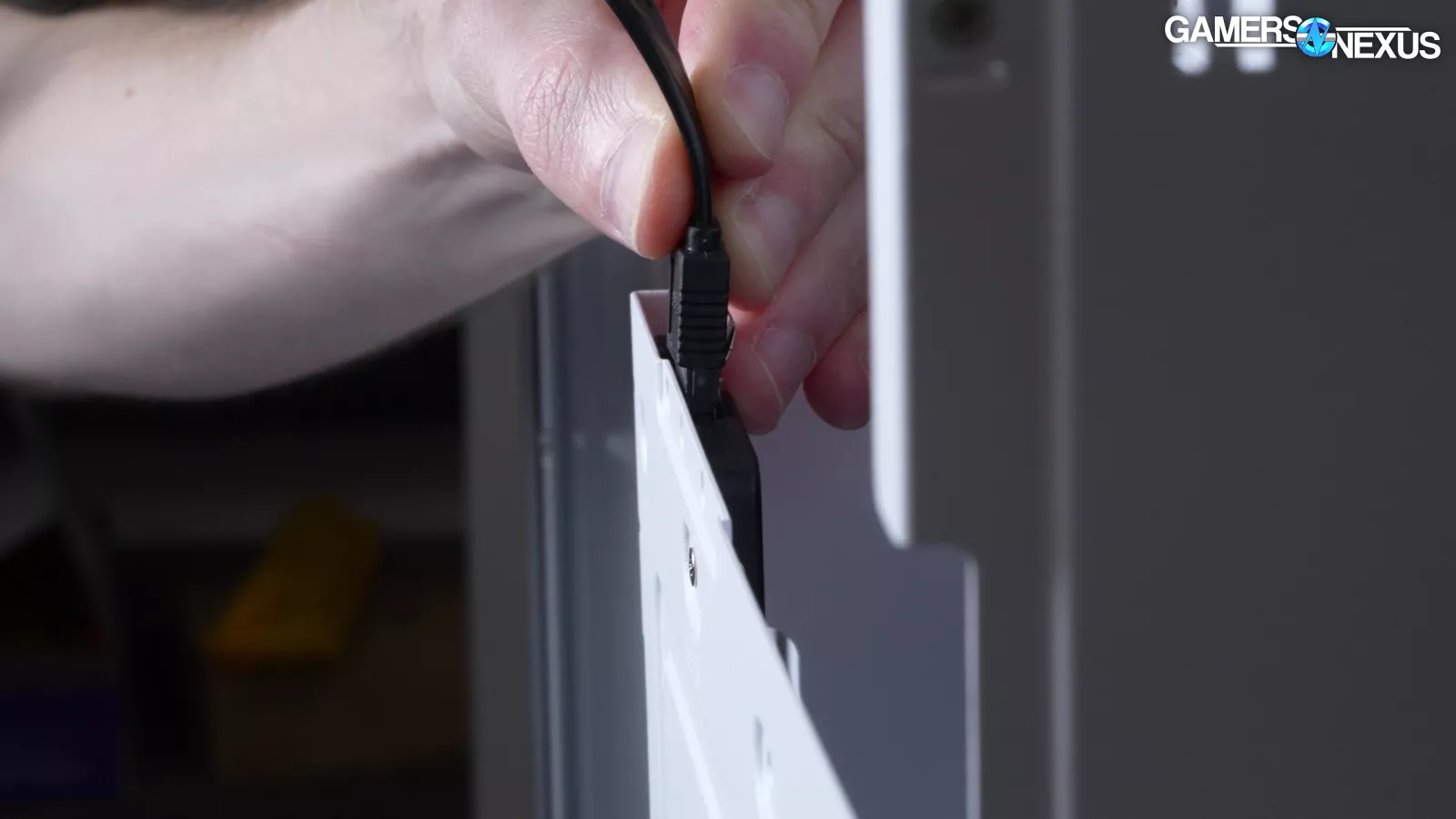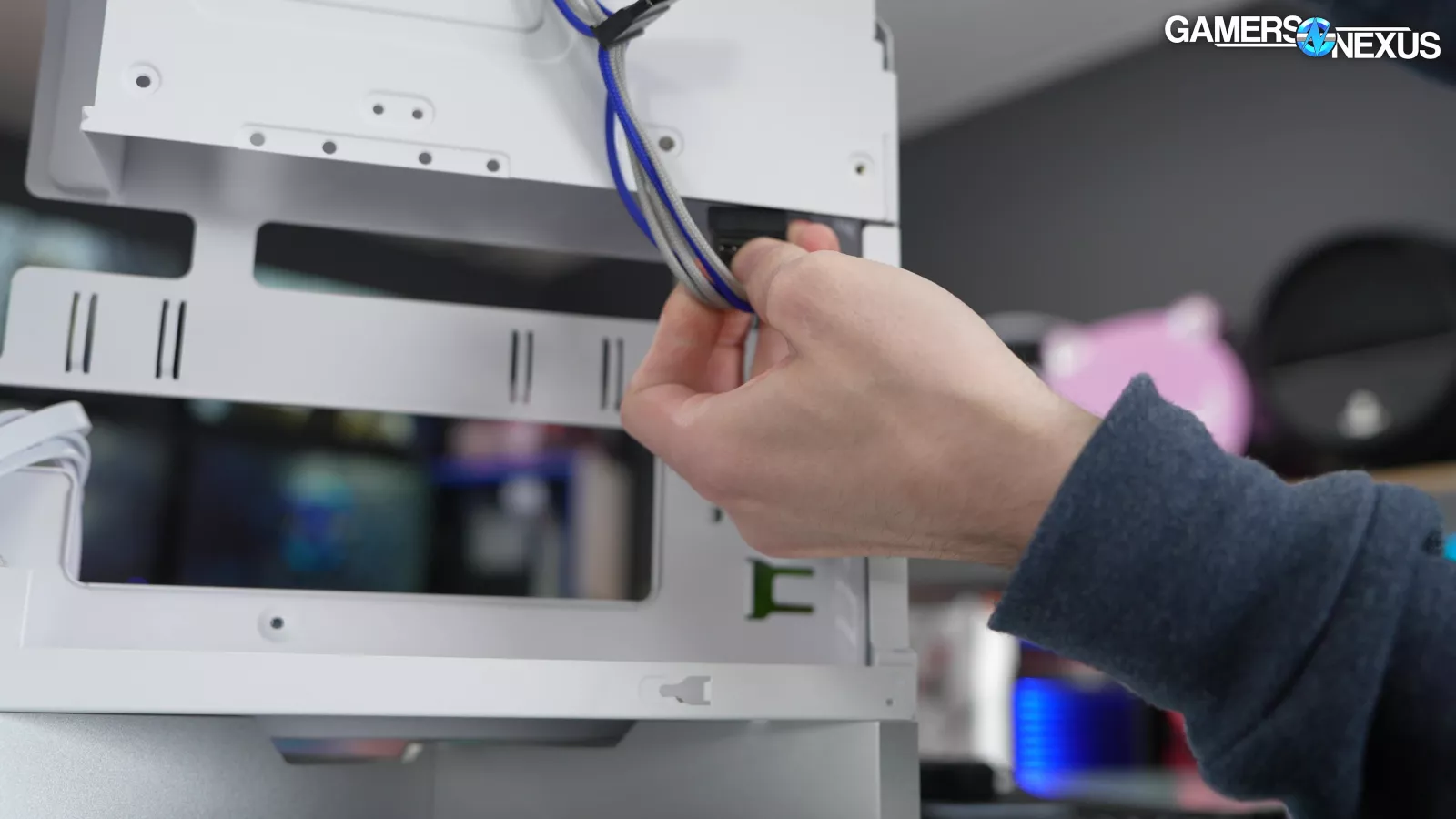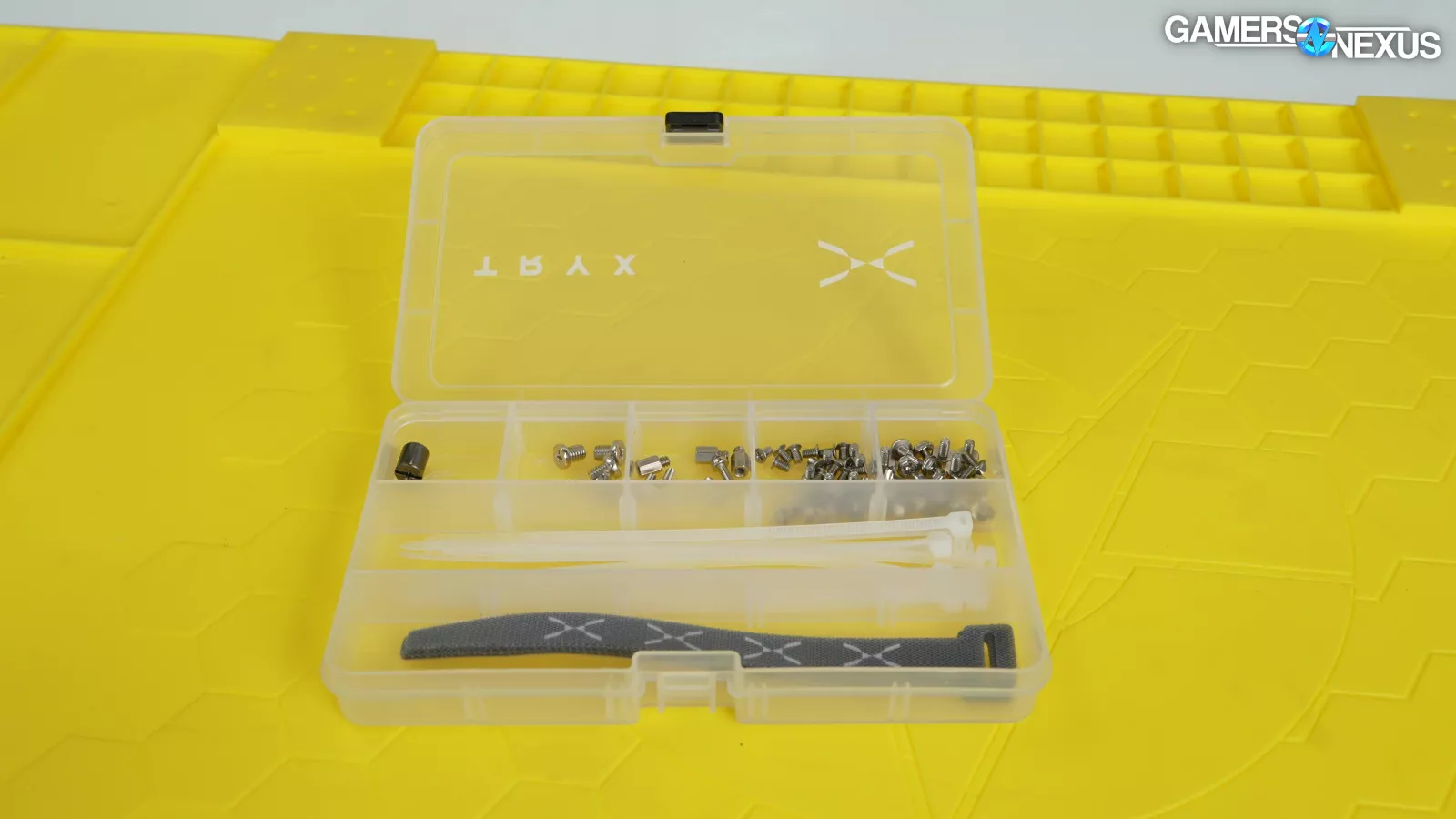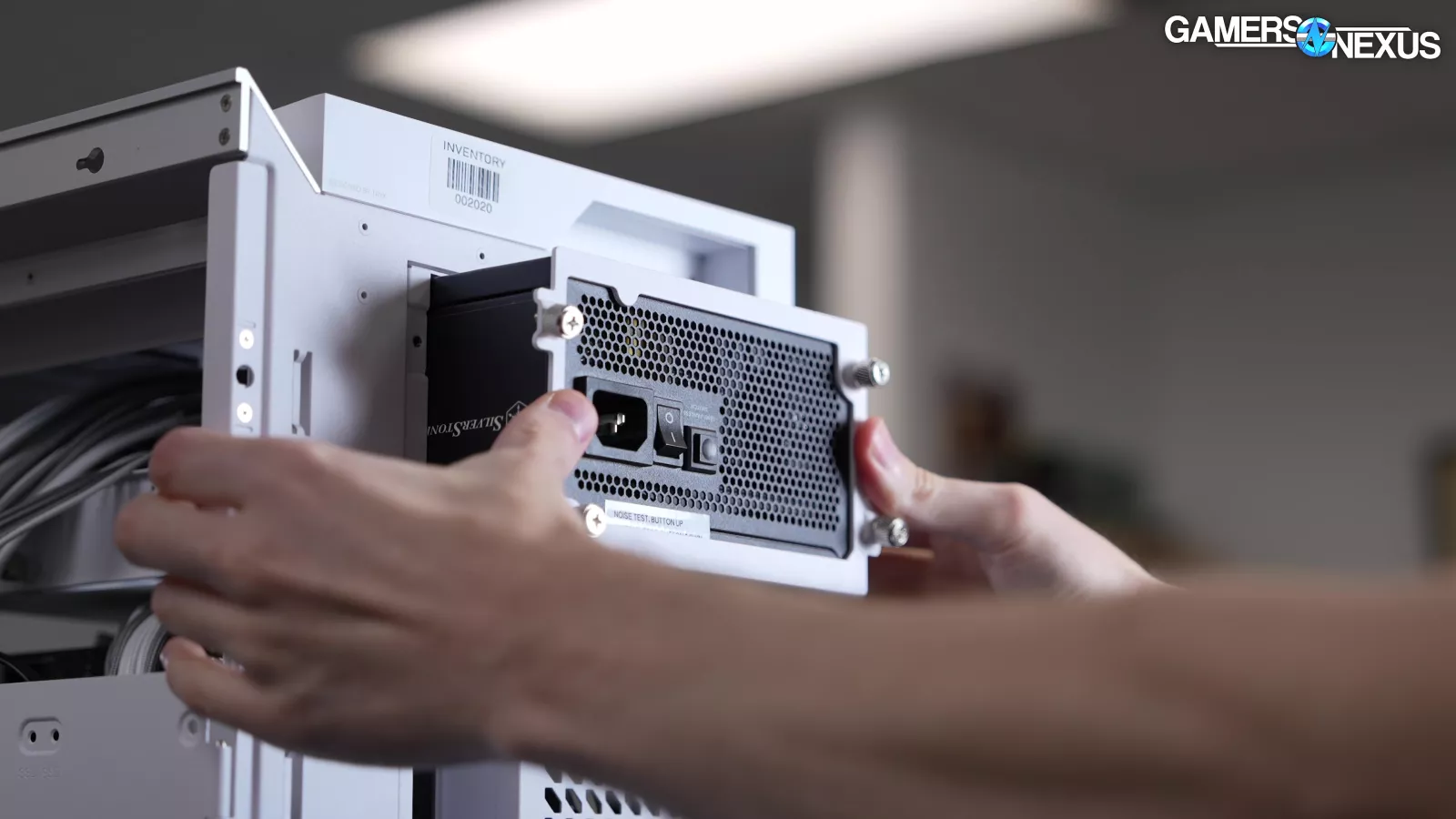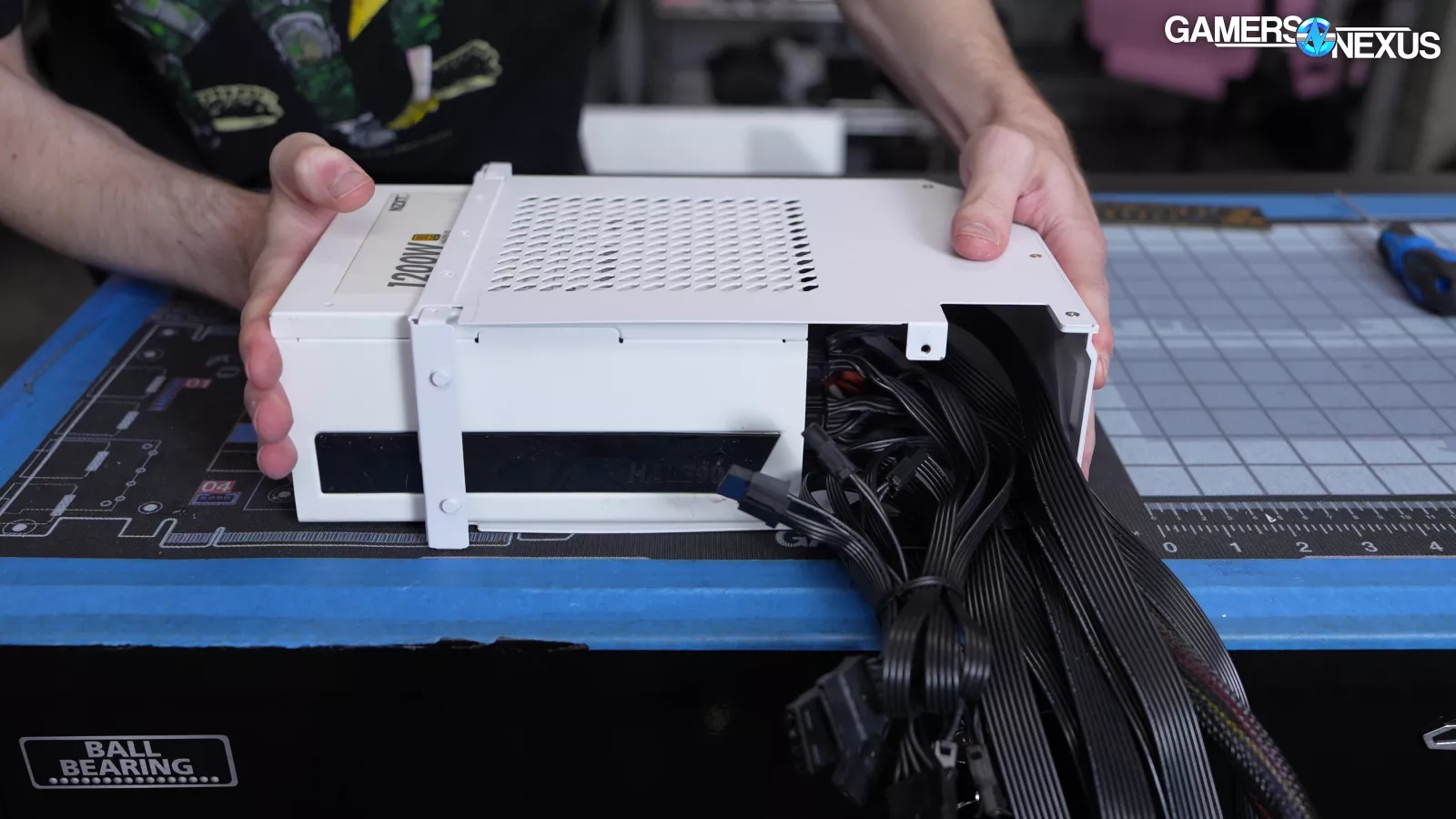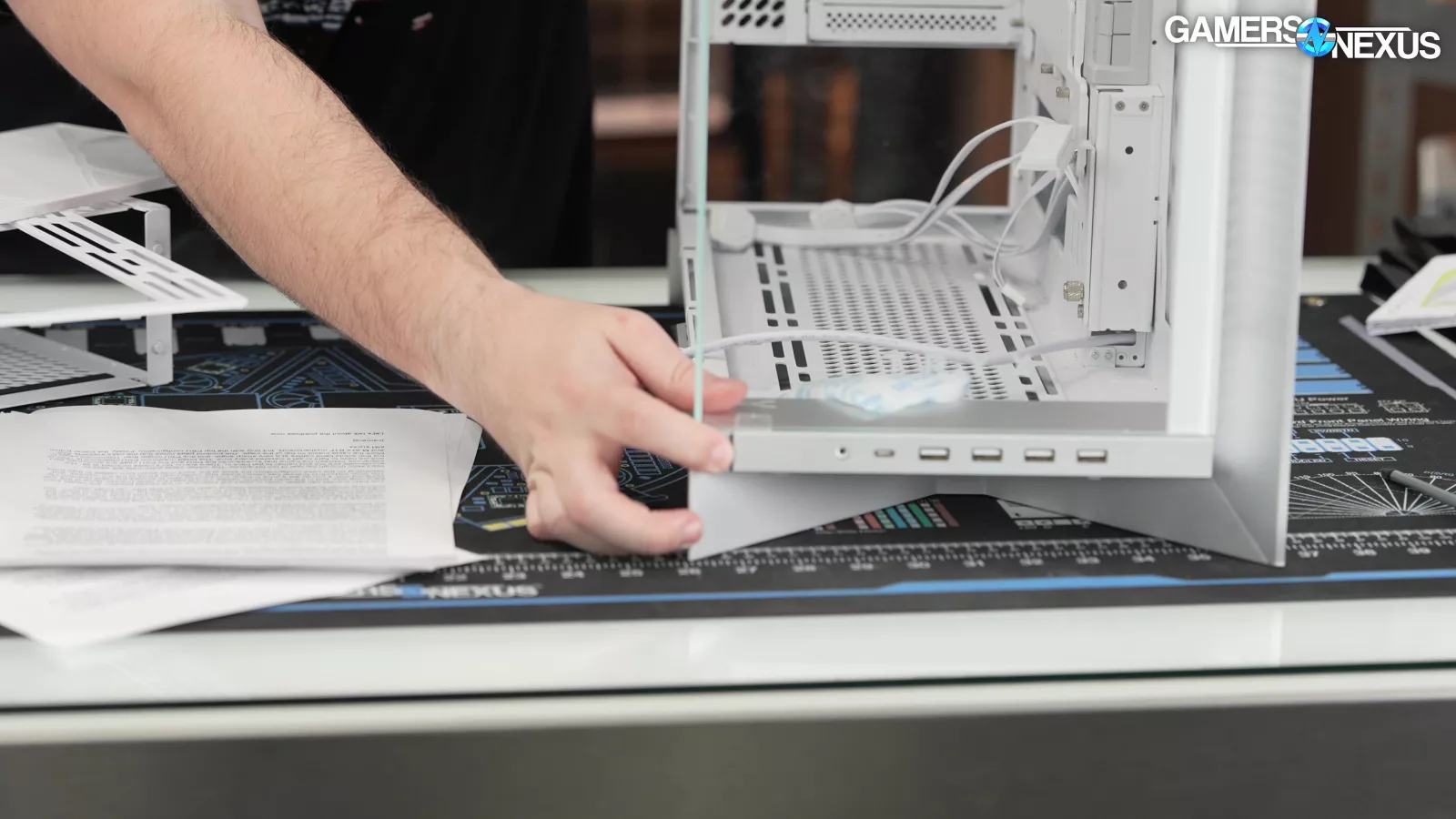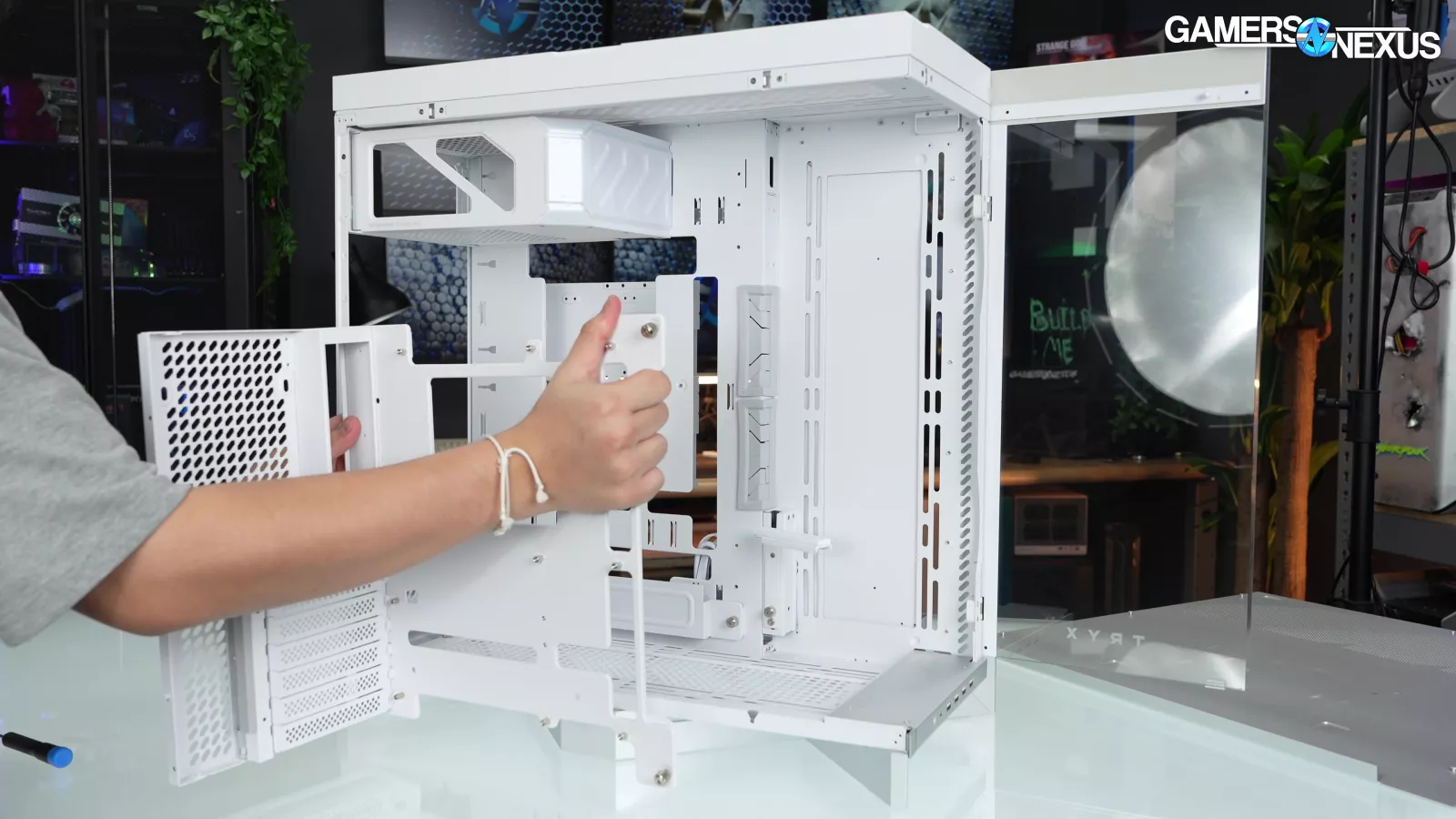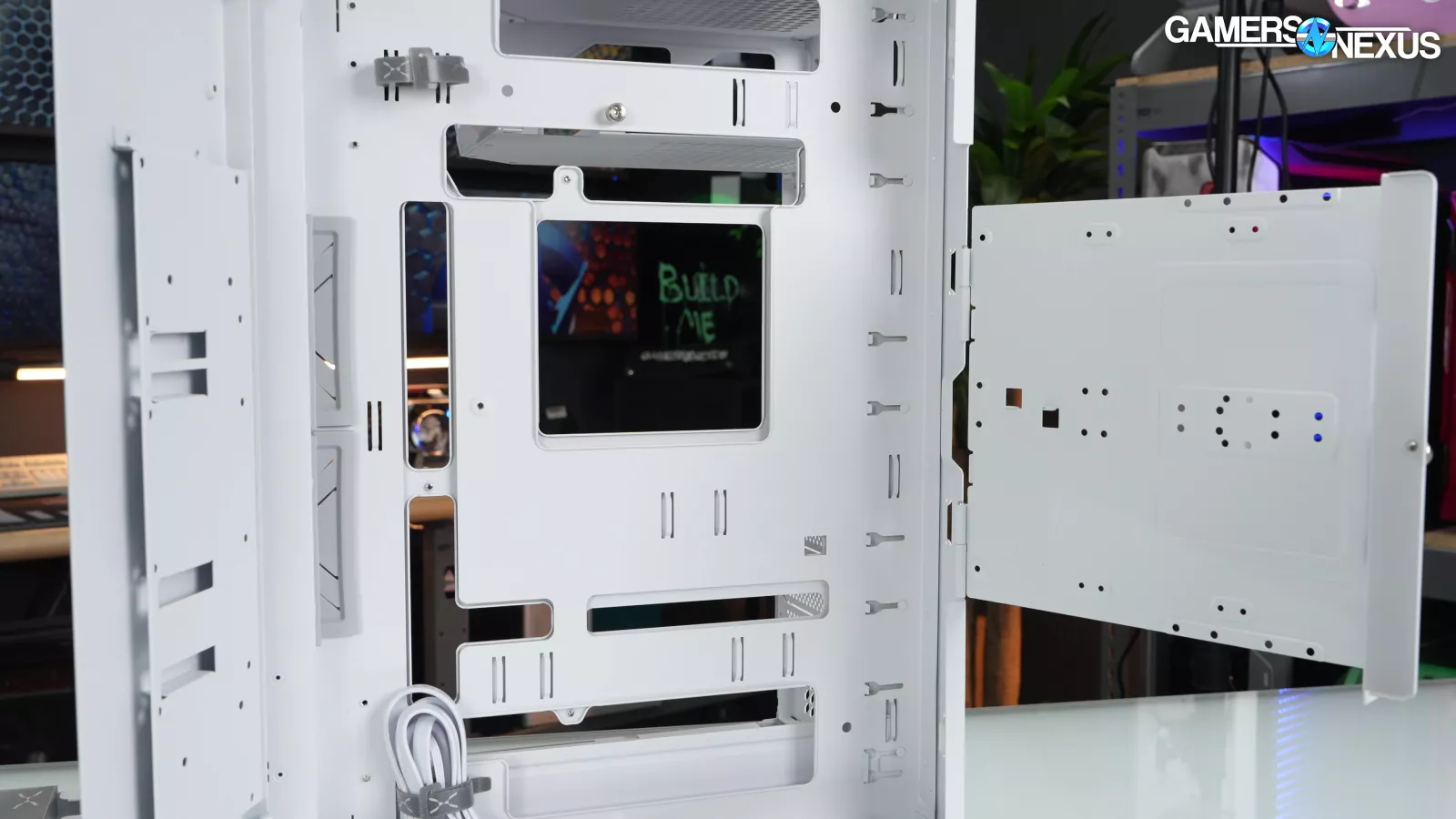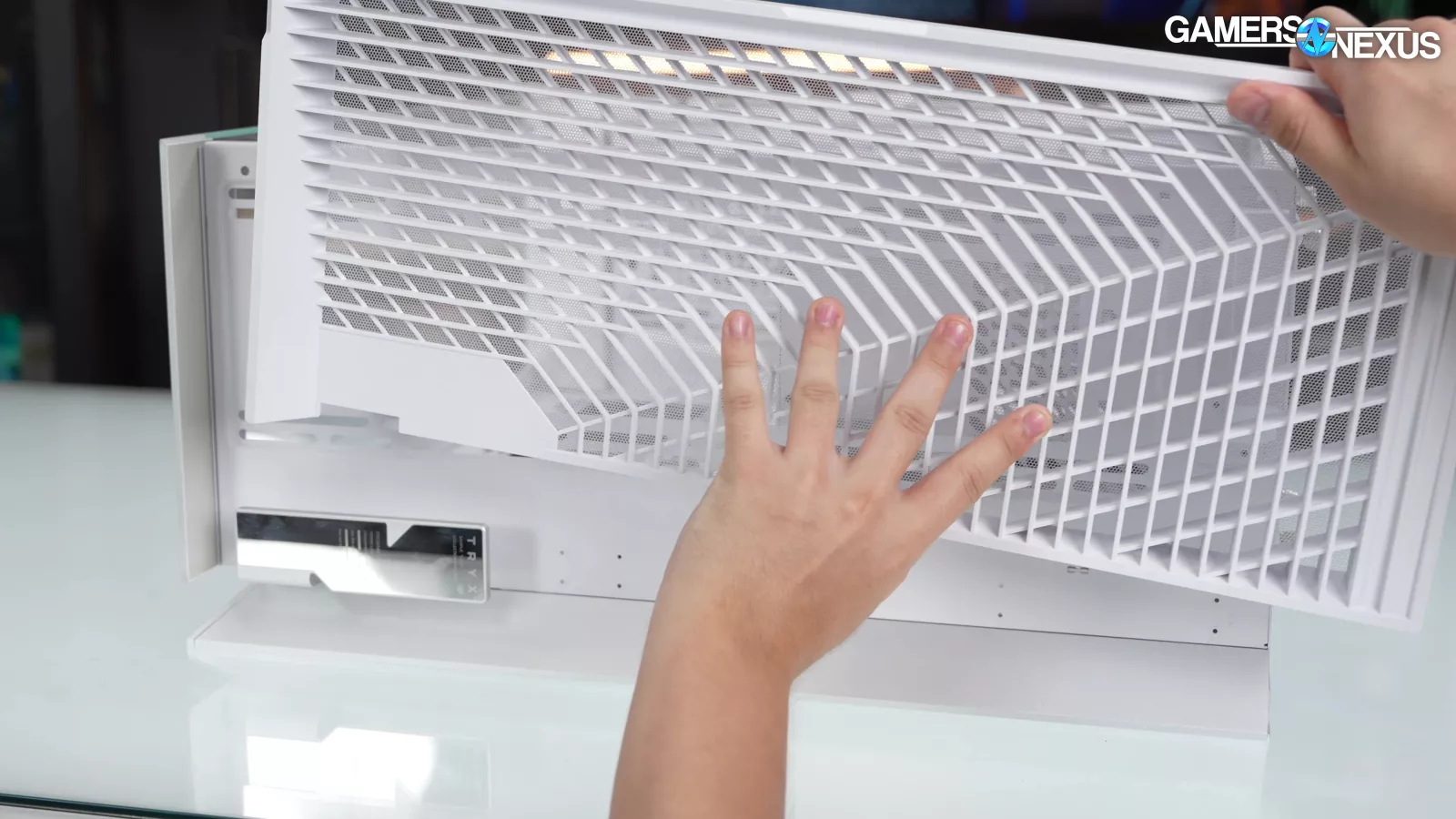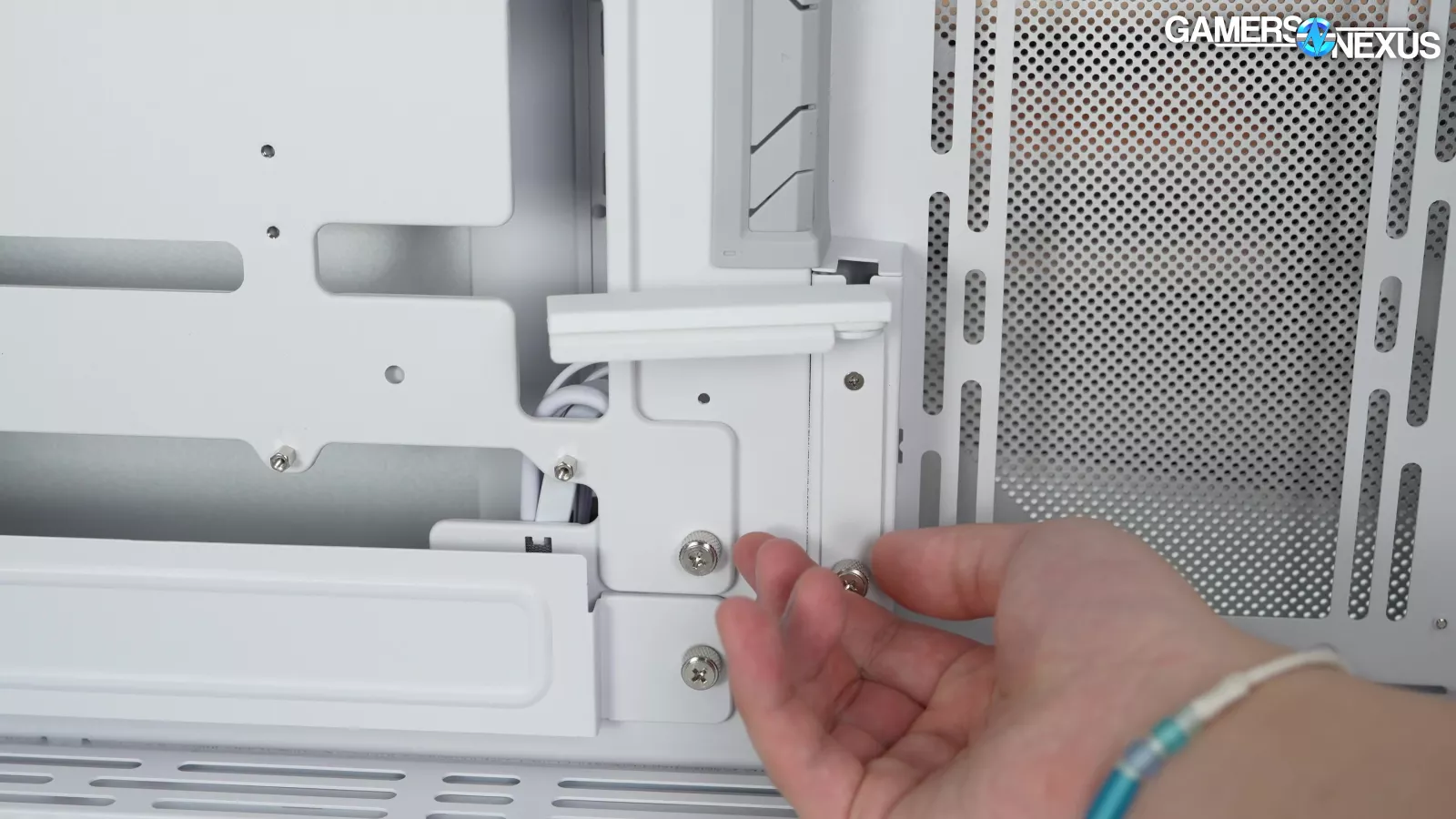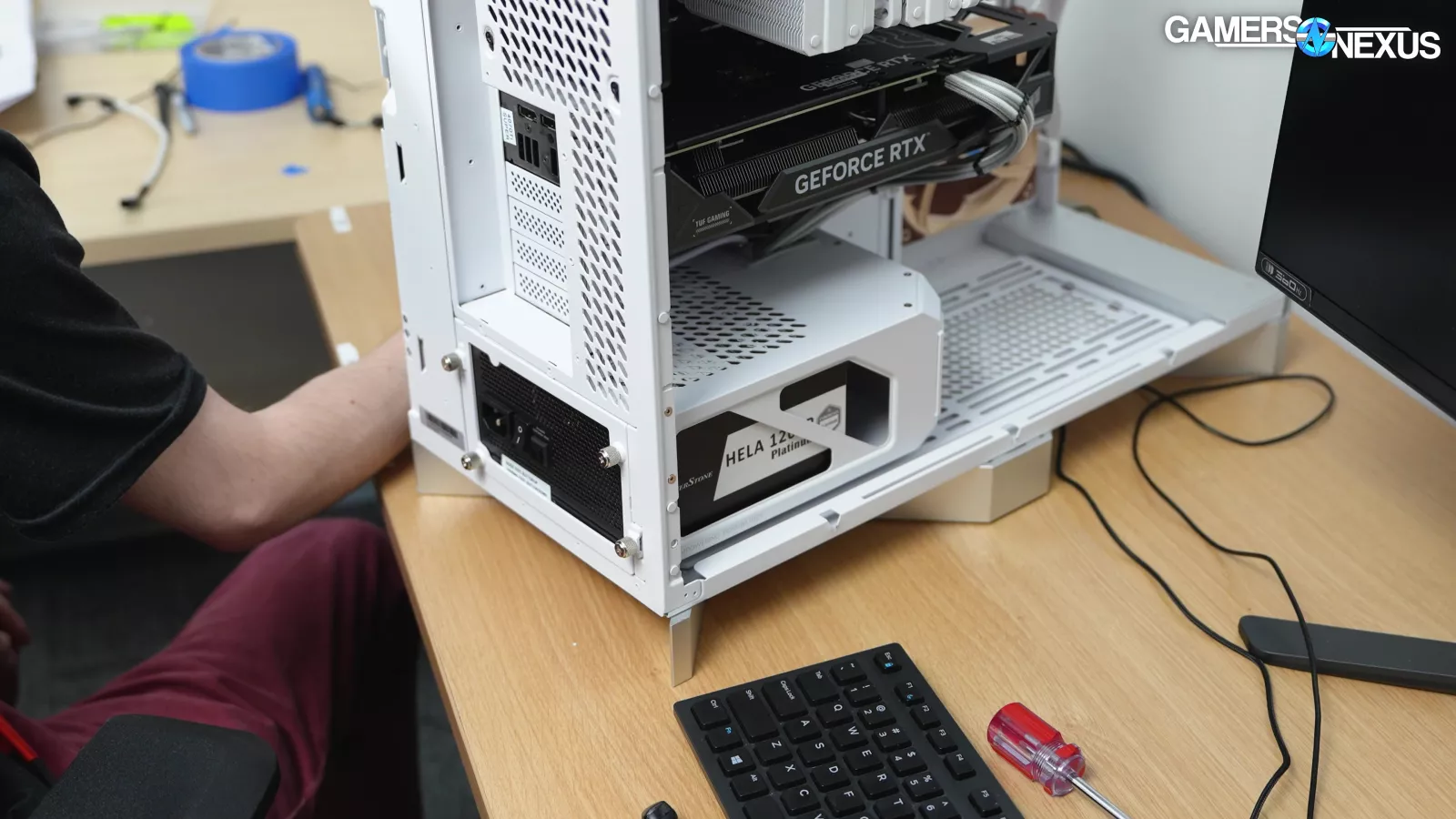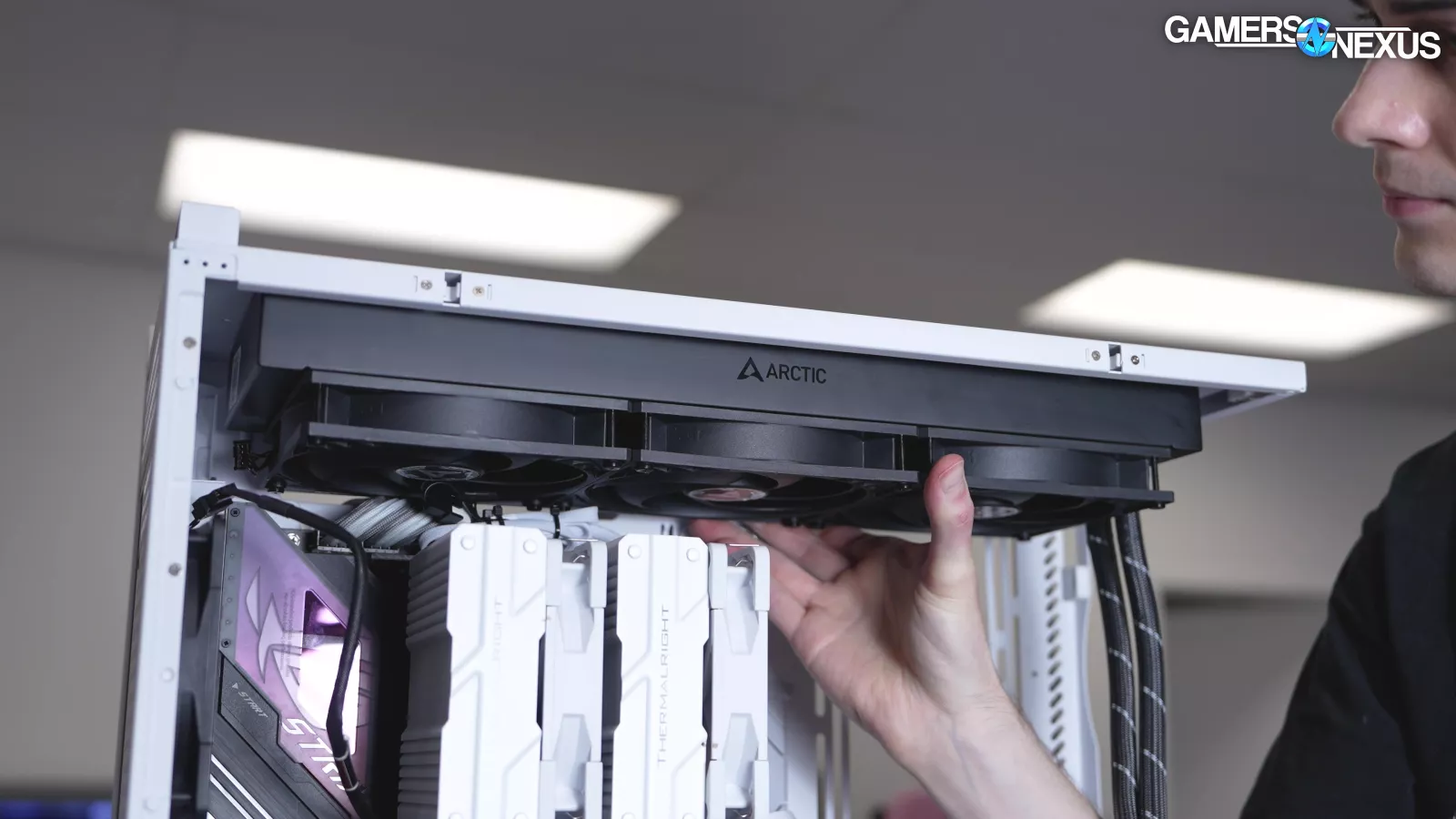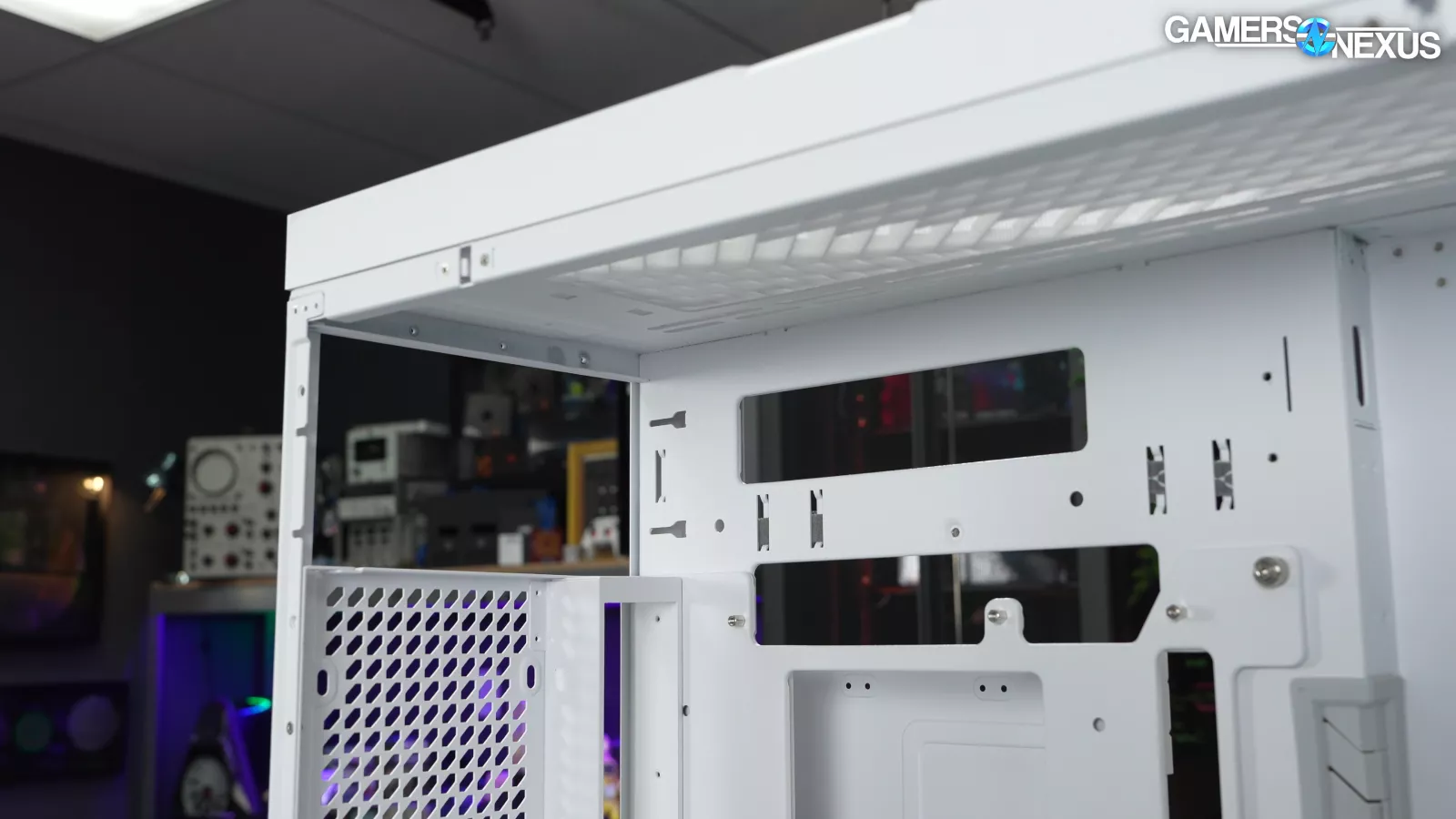
We examine the Tryx LUCA L70’s thermals, build quality (or lack thereof), and more
The Highlights
- The LUCA L70 is the first case from Tryx, a company founded by former ASUS, Cooler Master, and Asetek employees
- The case has the most build quality and assembly issues we’ve ever encountered out of the box
- The build quality of the L70 is worse than that of cases that cost $200 less
- Original MSRP: $240
- Release Date: September 20, 2024
Table of Contents
- AutoTOC

Intro
This case has the most build quality and assembly issues we’ve ever encountered out of the box.
There were gouges in the aluminum feet, a corner that was severely bent, deformed fan rails, and other more minor issues -- like the entire motherboard tray and rear panel assembly being bent, bottom support for the hinged door being bent down, and an aluminum plate over the front I/O that was bent. Even if some of these were catalyzed by shipping impacts, Tryx is responsible for not only packing the product in a way they can ship it, but also ensuring that their design is resilient enough to withstand the basics of transit.
Editor's note: This was originally published on September 20, 2024 as a video. This content has been adapted to written format for this article and is unchanged from the original publication.
Credits
Test Lead, Host, Writing
Steve Burke
Testing, Writing
Patrick Lathan
Camera, Video Editing
Vitalii Makhnovets
Video Editing
Tim Phetdara
3D Animation
Andrew Coleman
Writing, Web Editing
Jimmy Thang
At least one fault is inherent to the case design: the top panel sagged down, misaligning the snaps for the side and front panels.
Its snaps were already loose, but knocked out of alignment, they can barely hold its panels on. There's a reason that cases often have a support pillar in the front corner, or at least something like the Lian Li O11 Vision’s triangular bracket.
So we think the build quality is overall worse than the $34 Zondda-O we reviewed, except the Tryx LUCA L70 costs $240.
Tryx is a new company, which may partly explain why we were given a special, later embargo of today. Today is the launch of the case. Strangely, some reviews were selectively permitted to go live before us, something we were not made aware of until they posted. This doesn’t affect our bottom line since you all come to our case reviews for our work, which we appreciate, but it does reflect on what appears to be teething pains for a new company. Some of those same growing pains are seen throughout the case design, and today, we’re reviewing the LUCA L70 case from Tryx, a company which has major funding behind it despite being new. And our hope is that the company can learn from our review for its future projects.
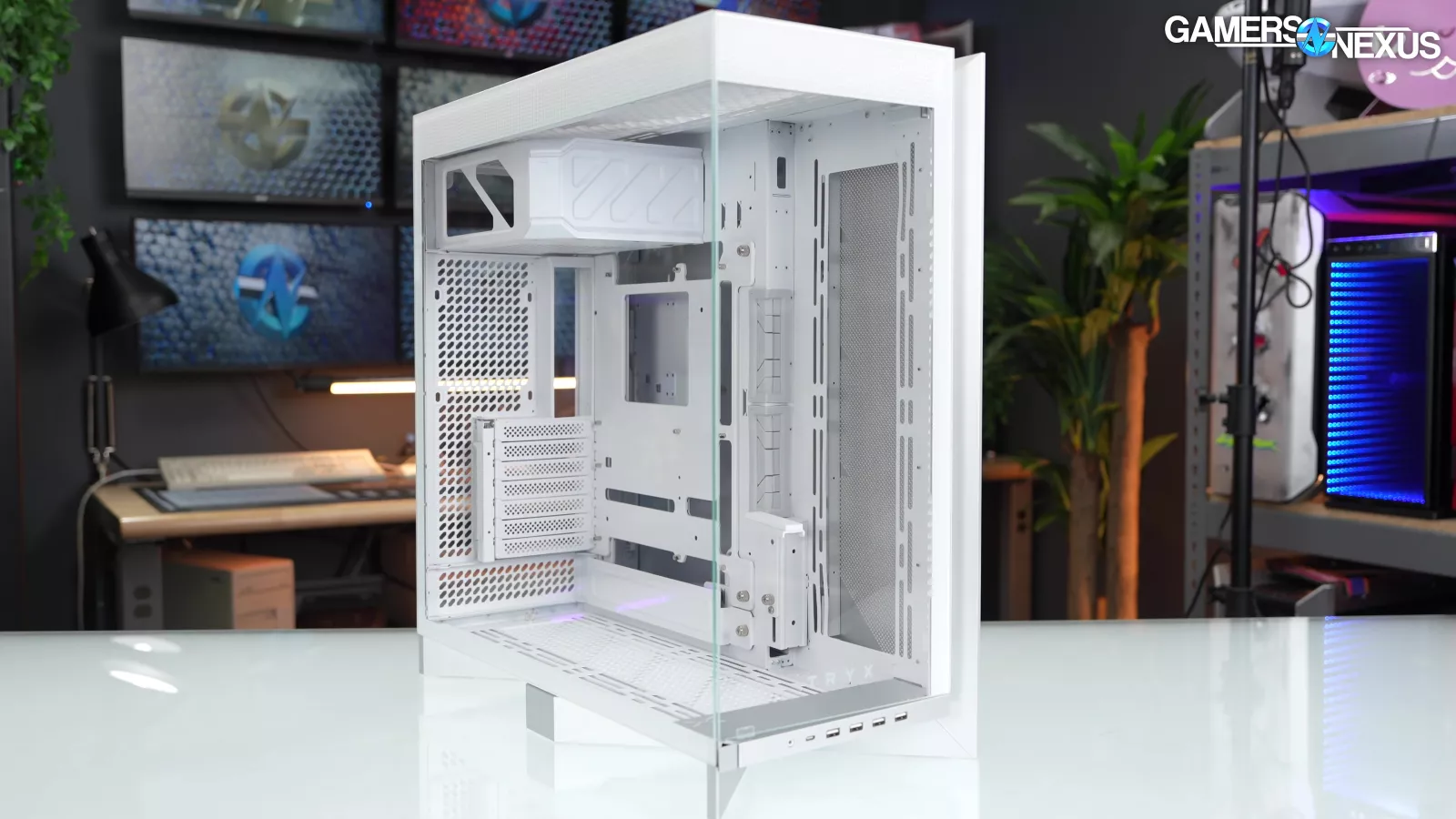
Some quick backstory: Tryx is a brand new manufacturer that first came on the scene with its Panorama Pro CLC, but it also more recently showed off several upcoming case families at Computex, including the LUCA. The LUCA L70 is the first to market, with a mesh-fronted L70 Air variant likely following at a later date.
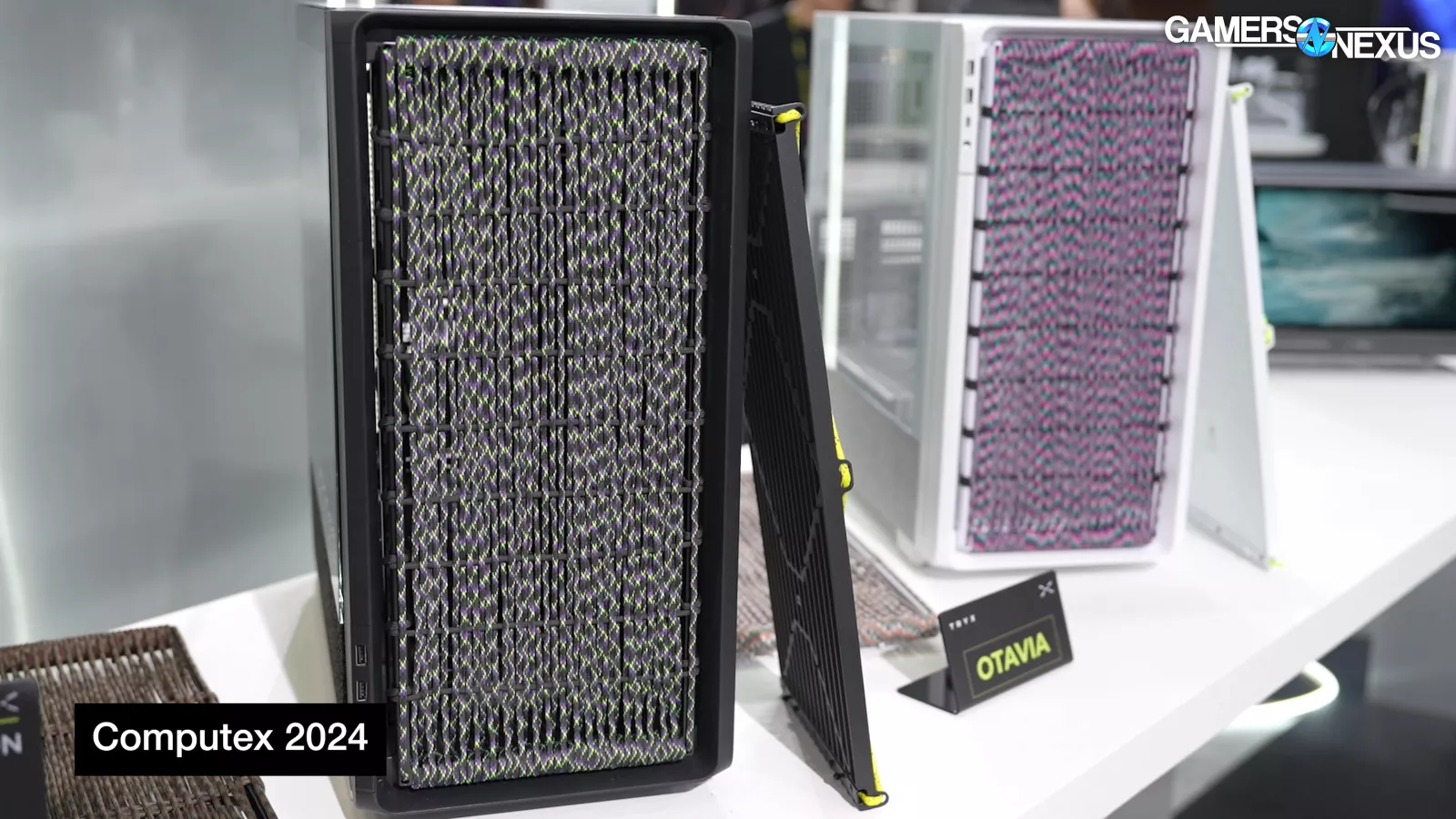
Tryx is a vaguely cosmic-y themed company. “LUCA” stands for “Last Universal Common Ancestor”; as for the other cases that have been revealed so far, Otavia is the name of what could be the oldest known animal fossil -- fitting for a case with a front panel essentially made out of future dust.
But despite being new, Tryx is not inexperienced. The company was founded by former members of ASUS, Cooler Master, and Asetek. Asetek is the forlorn water cooling company that has been largely replaced in the DIY market. Asetek has put some serious marketing effort behind Tryx, which is its premiere partner for the new generation of pump in its Panorama cooler. Tryx also hosted an expensive influencer event for its launch in China, where it featured space-themed set dressing and hosted influencers from Bilibili.
So the company has some money to it and isn’t just some small, fresh startup; in fact, the former Cooler Master General Manager of the Case Business Unit is a co-founder of Tryx.
That’s the backstory. Let’s get into the case.
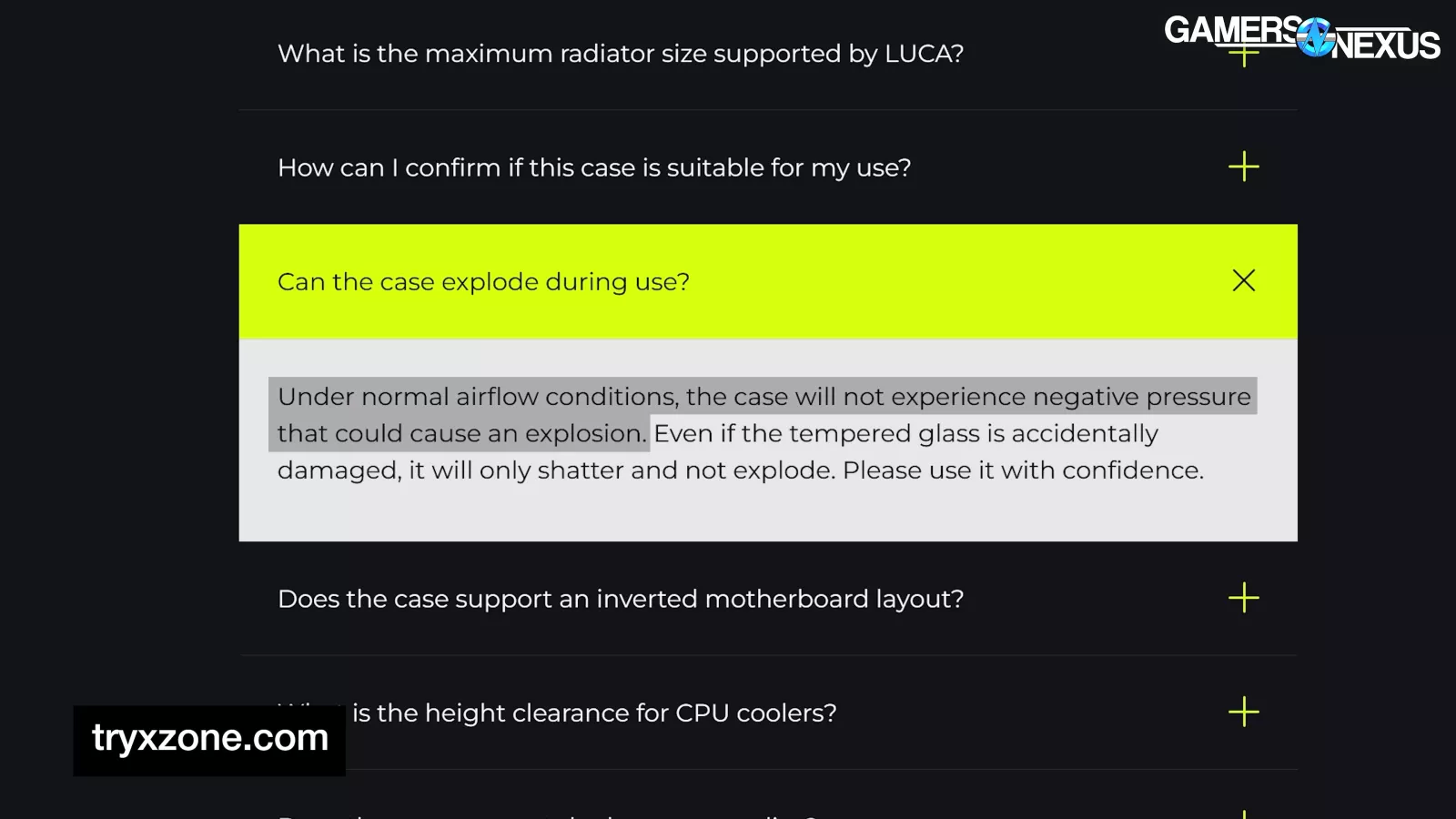
The L70 is priced at $240 for the two variants, black and white. The FAQ states that "under normal airflow conditions, the case will not experience negative pressure that could cause an explosion," which we really hope is a joke about… spaceships, or something. Regardless, the L70 non-Air doesn't ship with any fans, so explosion danger is minimal.
Tryx Luca L70 Specs
| Model | LUCA L70 |
| Size (LxWxH) | (L)540 x (W)262 x (H)572 mm |
| Material | Steel, 4.0 mm TG, Aluminum, Plastic, Stainless steel |
| Motherboard Support | E-ATX (280mm Maximum)/ATX/Micro-ATX/Mini-ITX |
| Expansion Slots | 7 |
| Input/Output Ports | 1 x Power button, 4 x USB 3.2 GEN1, 1 x USB 3.2 gen 2x2 TYPE C, 1 x Audio/Speaker |
| Fan Support | Top: 2 x 120 mm / 2 x 140 mm (bottom PSU placement: 3 x 120 mm / 3 x 140 mm) Side: 3 x 120 mm / 3 x 140 mm Bottom: 3 x 120 mm / 3 x 140 mm (top PSU placement: 1 x 120 mm / 1 x 140 mm) Rear: 1 x 120 mm |
| Radiator Support | Top: 240 mm (bottom PSU placement: 240 / 280 / 360 / 420 mm) Side: 240 / 280 / 360 / 420 mm Bottom: 240 / 280 / 360 mm (top PSU placement: 120 mm) |
| Storage | Up to 2 x 3.5" HDD or 9 x 2.5" SSD |
| CPU Cooler Height Clearance | 170mm Maximum |
| Power Support | ATX, 190mm or less |
| GPU Support | 460mm Maximum |
| Cable Management Space | 63mm |
| Net Weight | 16.2 KG |
| Gross Weight | 19.6 KG |
| Warranty | 2 years |
Specs copied from manufacturer materials, please read review for our own measurements and opinions
The Build
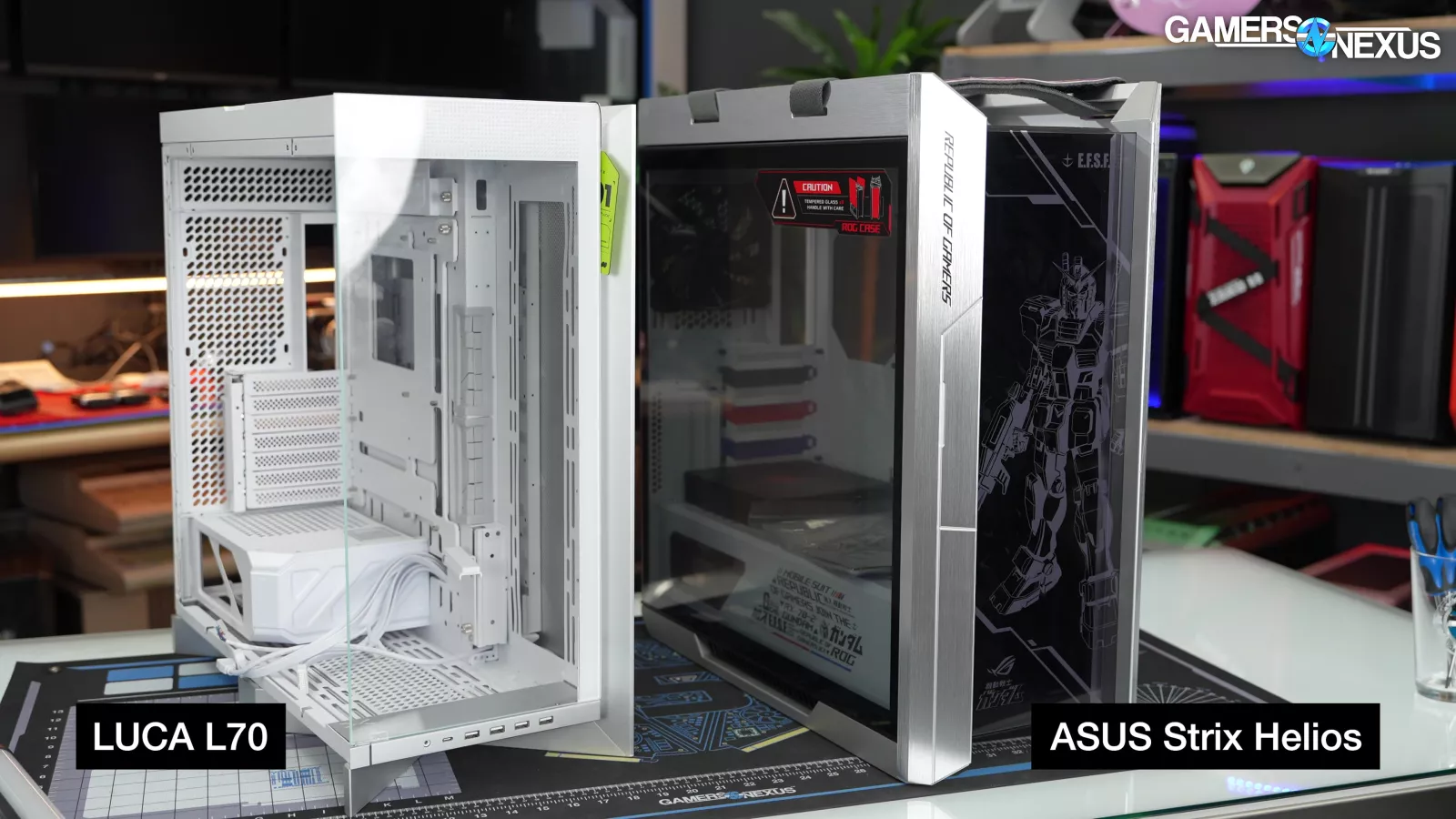
The Tryx L70 has an ASUS ROG look to it, specifically reminding us of the old Strix Helios: it's big, it's expensive, and there are huge chunks of aluminum, which is an expensive material. We weren't impressed by the Helios based on its price and thermal performance, but we've also kept one in our set background for months because, like the L70, it's impressive to look at.
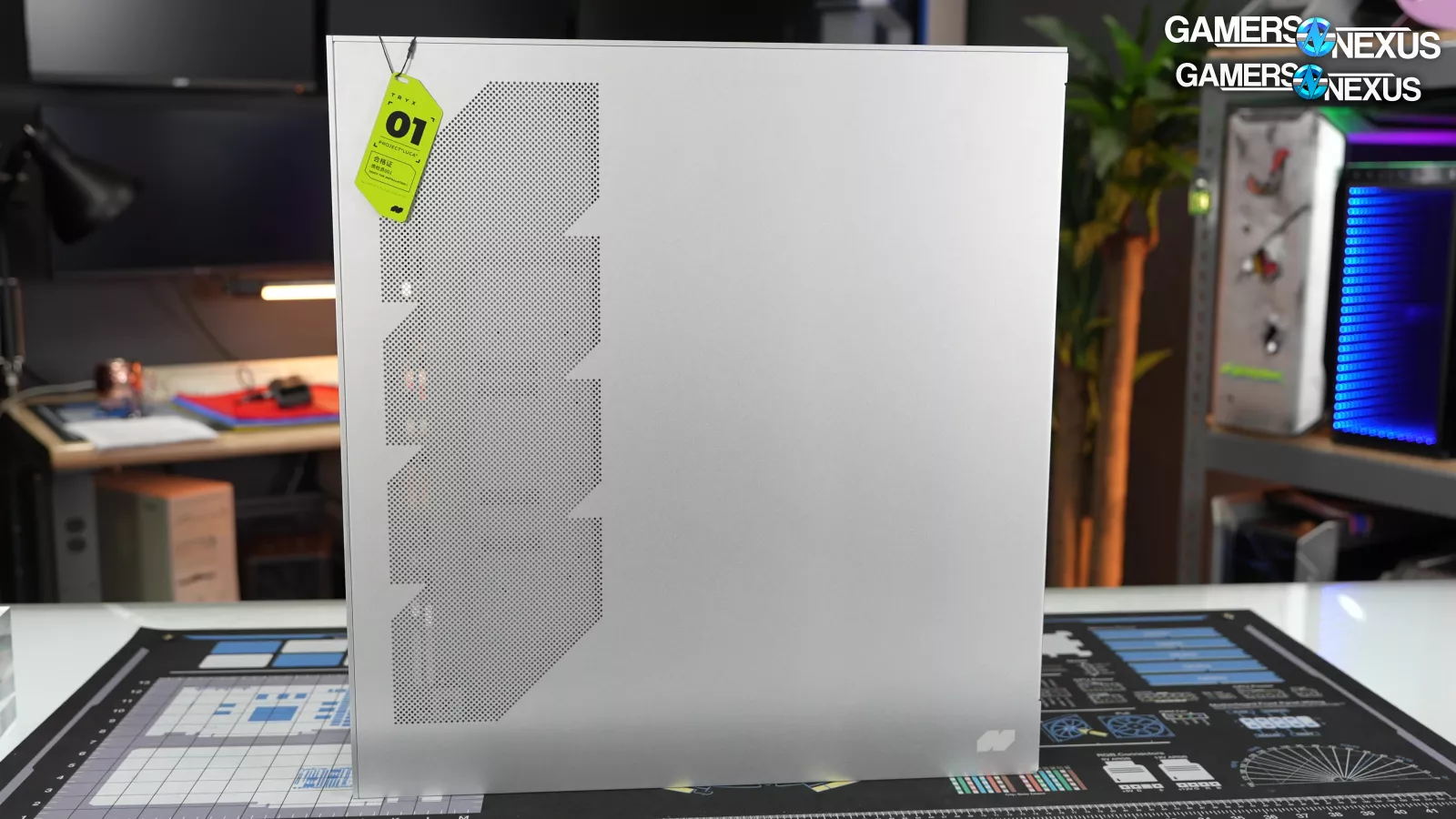
If any part of the case's appearance is divisive, we expect it to be the top panel with its toilet bowl angles centered on the shiny stainless-steel nameplate. Or maybe the aluminum side that extends all the way to the floor.
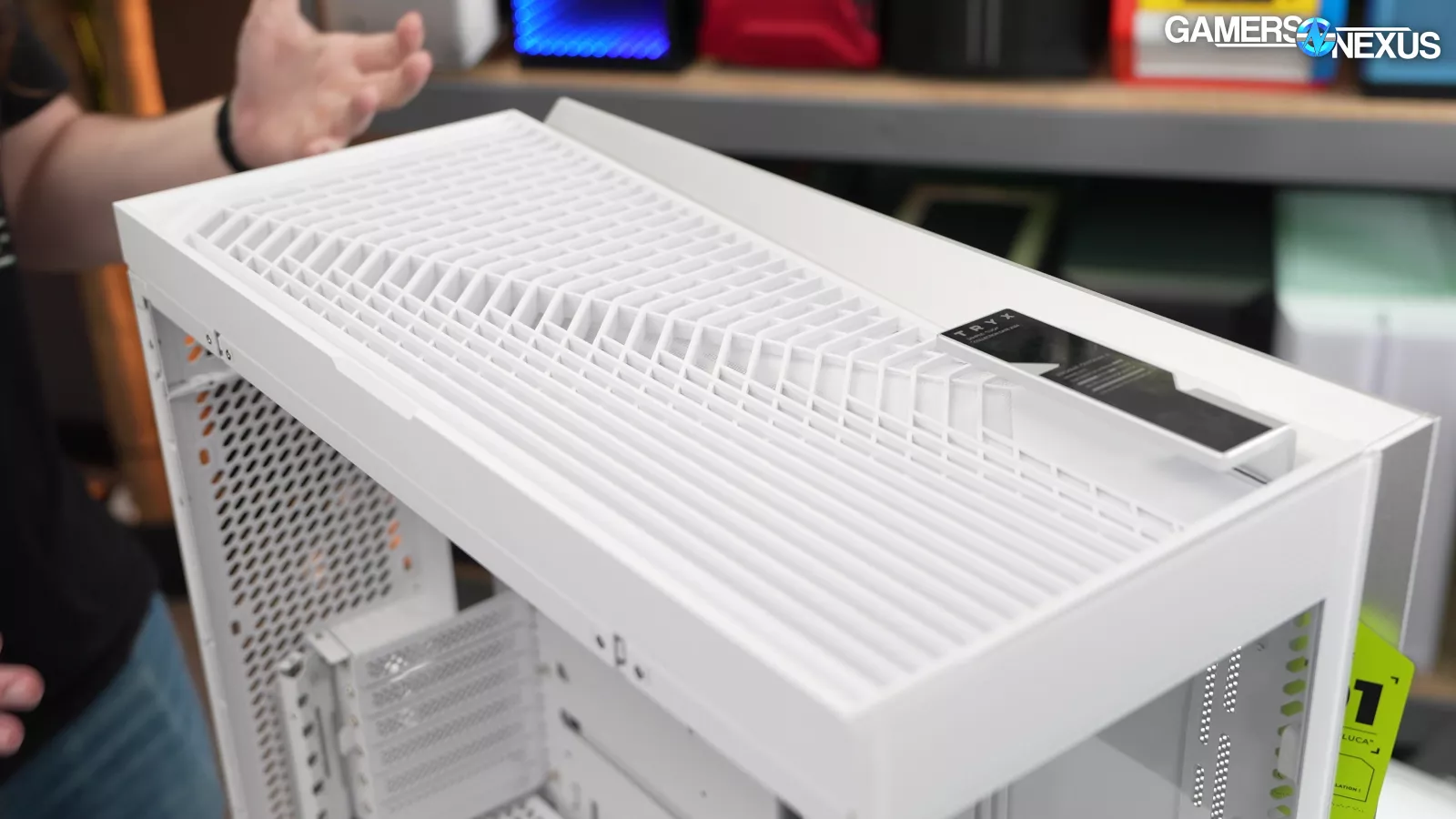
Now with the top panel, there’s a good idea there. We don’t get too much into the subjective, but this case sort of demands it: We feel like a more seasoned company might try to pull this motif across more of the case, but as it stands, it is an almost random-looking assortment of materials and geometric patterns. We do think there’s something in that top panel design and like it overall, despite our issues elsewhere in the enclosure.
We’ll start with a flyover of the negatives. We're going to be nitpicky here, because there are a lot of small problems that are hard to get past at $240.
We already listed the litany of issues with gouges, bends, deformed rails, loose snaps, and caving-in panels near the top of the review. Those complaints remain -- but we do have more.
We’ll start with this one: Tryx says the LUCA is intended to use bottom-to-top airflow, but large parts of the bottom of the case are surrounded by an impenetrable aluminum curtain. The bottom fan bracket sits on top of redundant fan mounts built into the case. The bottom vent is a typical design with punched holes backed by a filter, but it would have benefited from being more open, like the Antec C8, to allow those fans to breathe.

Tryx also makes the claim that the case is “-13% smaller desktop footprint.” Now, you might ask, “13% smaller than what?” After asking, we learned that this is apparently in comparison to dual-chamber cases. Now, again, the natural inclination is to ask about which one. It’s made-up. No one knows.
Regardless of how many percentage points smaller than something imaginary the L70 is, it’s still large. With our test system installed, the whole PC weighs almost 24kg, but the weight is only really a problem because it causes flexing when picking up the case, especially with the lack of support between the two glass panels. We complain sometimes about completely toolless glass panels, but this is the first case we've reviewed in a long time that has felt like a panel might actually fall off. And actually, while we were taking b-roll, the glass side panel did pop-out when we repositioned the case.
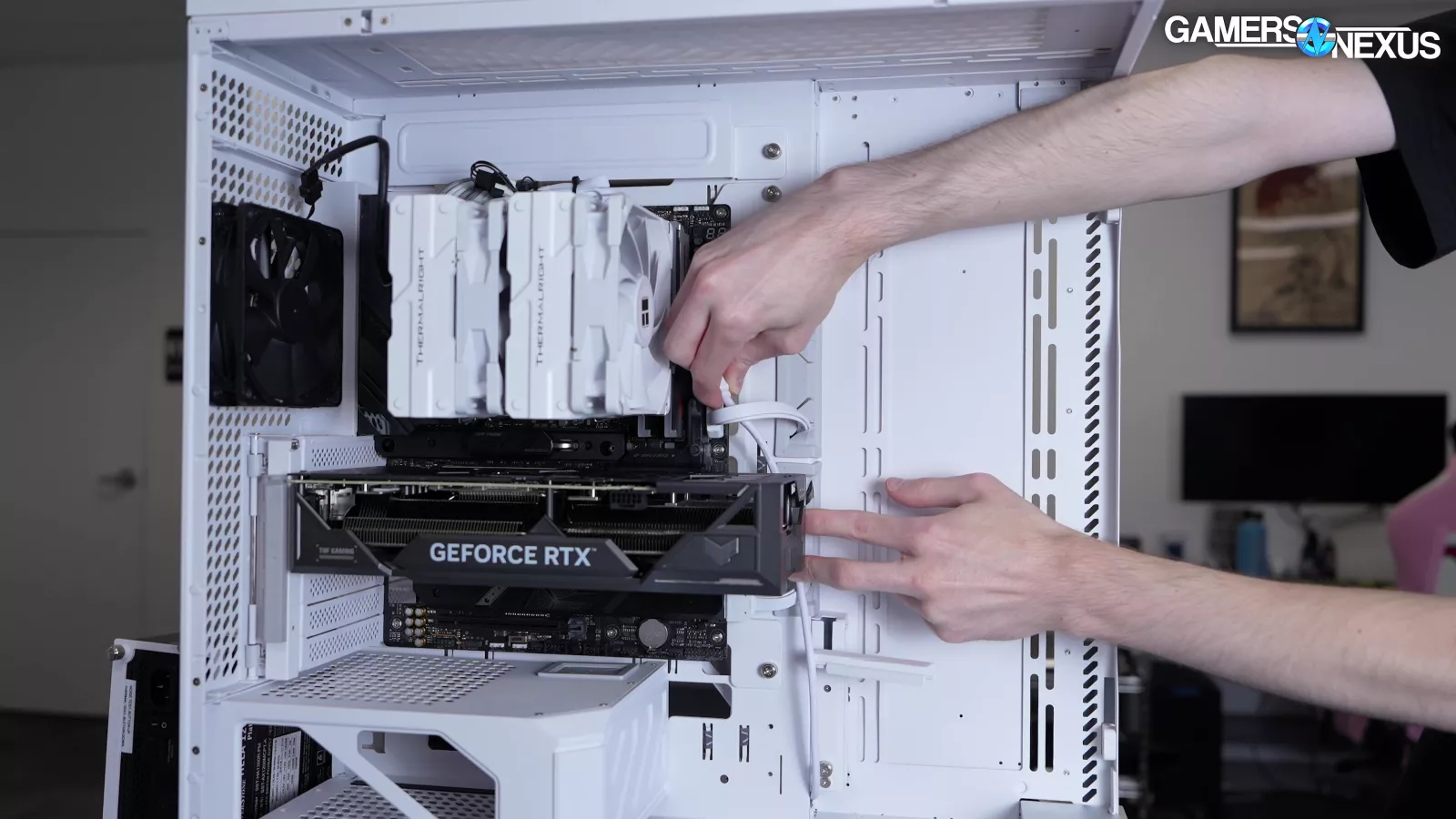
We repeatedly had problems with the I/O cables not being long enough as routed out of the box, which is worsened by needing to route cables around the hinged magnetic SSD mounting bracket. The small plate that extends the motherboard tray also made things worse; we installed it because that's what the manual shows, but at the bottom of the motherboard it partially blocks cutouts that are needed for I/O and fans, and at the top it partially blocks off cutouts that are needed for CPU power on non-back-connect motherboards. It seems like this was either never built in or not thought-through.
There are multiple locations in the case where captive thumbscrews are used inappropriately: On the motherboard tray, they're used to fasten two sheets of steel that are nearly flush, so the threads wedge the two pieces together as the screw is removed. Another is used to fasten the PSU cage in place, but it has to be completely removed in order to move the cage despite being captive. Both the motherboard tray and the PSU cage use tiny flush-head screws in addition to the thumbscrews, so you have to use a screwdriver no matter what.
There are 9x 2.5" drive mounts in the Tryx, 3x on the "SSD Mounting Bracket" and 6x on the "SSD/HDD Mounting Bracket," which can alternatively mount 2x 3.5" HDDs. Cable covers are unnecessary, but doubly so when you can't even see through the side panel: they chop up the huge 63mm-deep cable management space for no reason, requiring routing around them, and mounting drives to the covers requires leaving cable slack so that they can hinge open.
The SSD bracket can either open or close the side vent; in the closed position, the cables point the wrong way, and in the open position, cables can't fit past the other bracket. None of this was designed well in our opinion. If you do get a drive in there, you won't be able to access the cable retention clip. The other SSD/HDD bracket has raised areas that conflict with some of the 2.5" mounts, and depending on the case configuration, the slots at the back may strain your cables to their limits.
We'll skim through the rest of our list quickly. The rubber cable grommets are easy to accidentally pop out and harder to get back in. There are no fan screws included at all. The tolerances between the frame that screws onto the PSU and the PSU cage are annoyingly tight and we have to fight to get it installed every time. The listed maximum PSU clearance is 190mm, but that would bend cables at a very sharp angle, and any PSU longer than 150mm will begin to block the cable cutout on top of the cage. The product page notes that the case supports ATX and M-ATX BTF motherboards, but only with the top PSU configuration. Finally, the power button just sucks as it’s really stiff and has to be pressed directly in the center.
And now we’ll get to the neutral aspects.
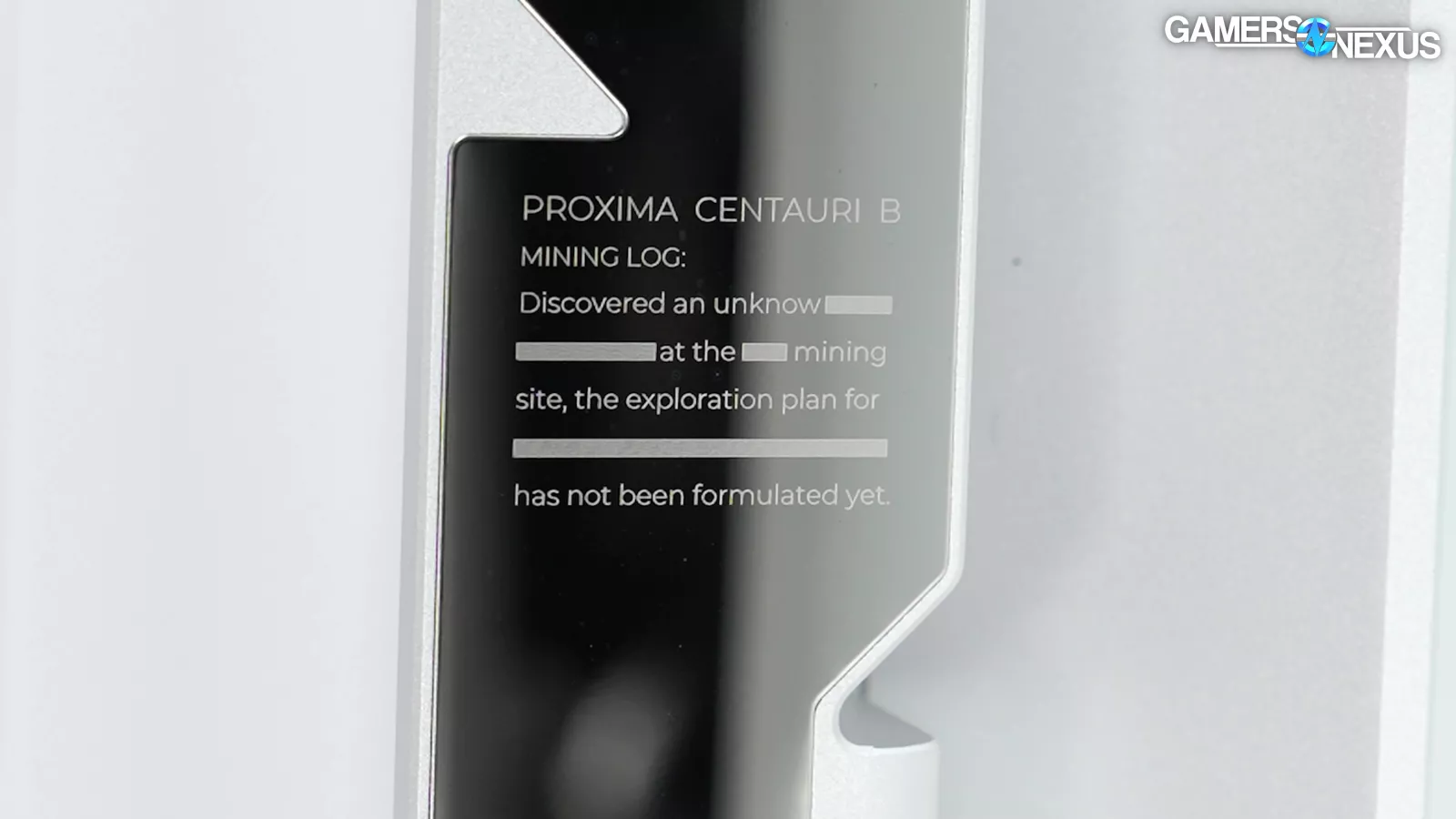
When we got our first look at the L70 back at Computex, we reported that there might be some engraving service offered for the nameplate, but that's not currently an option. Instead, Tryx told us that there's intentionally space left under the existing engraving so that customers can add their own. There’s some HYTE-style filler about "discovered an unknow" so that customers can add their own. Oddly, this is now the third time we’ve seen a company misuse this word, now ticking the boxes for both misuse as a noun and as a past participle used as an adjective. Intel’s A380 had into the “unkonw” and “into the unknow.”
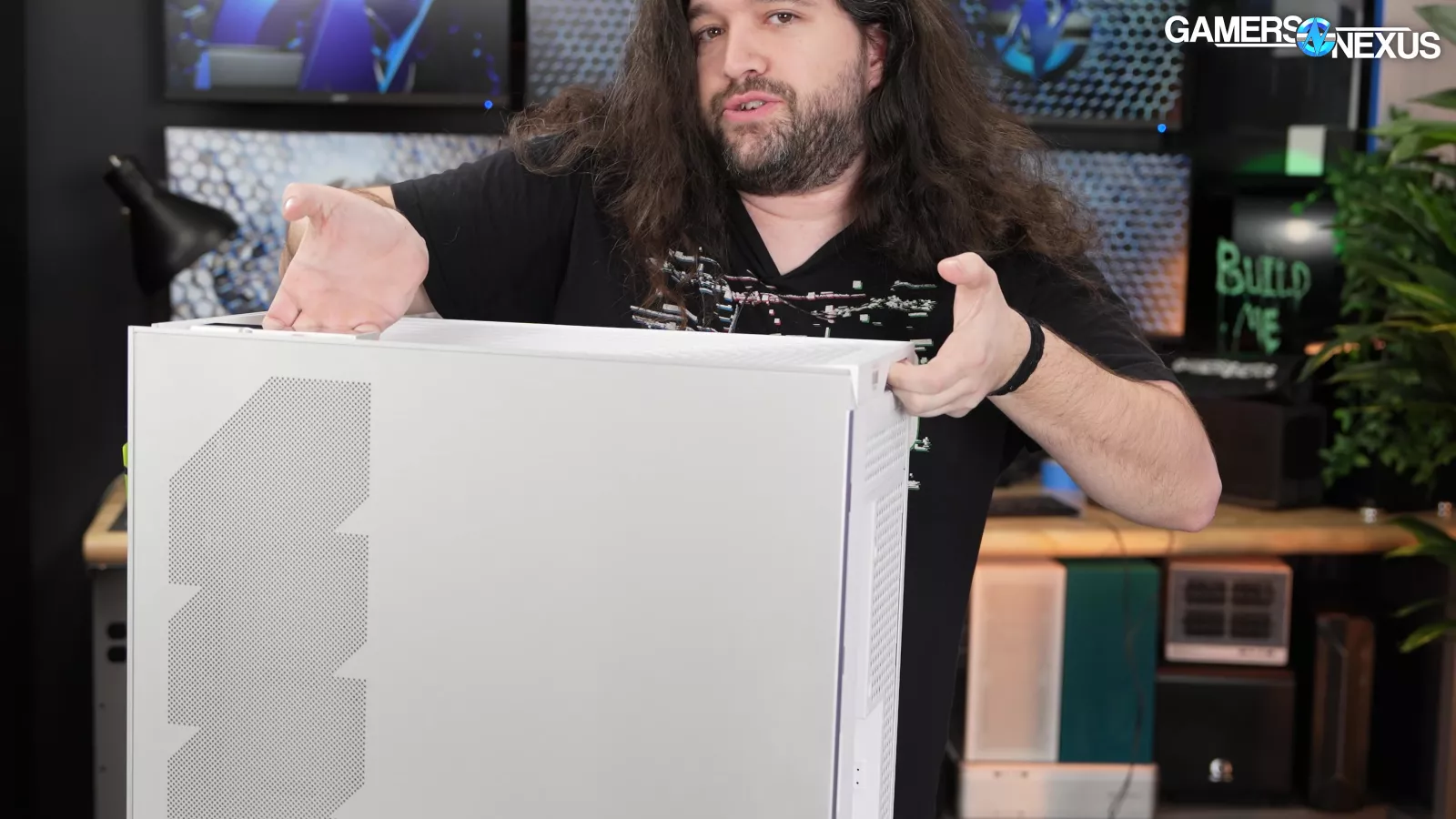
The nameplate-handle-thing is paired with a hidden handle at the rear of the case. They're sturdy enough to lift the system, but the case is very tall and very heavy, so it's far more practical to lift it from the bottom if you're trying to put it on a desk. We feel the same way about the Helios' weird velcro luggage handles (read our review here).
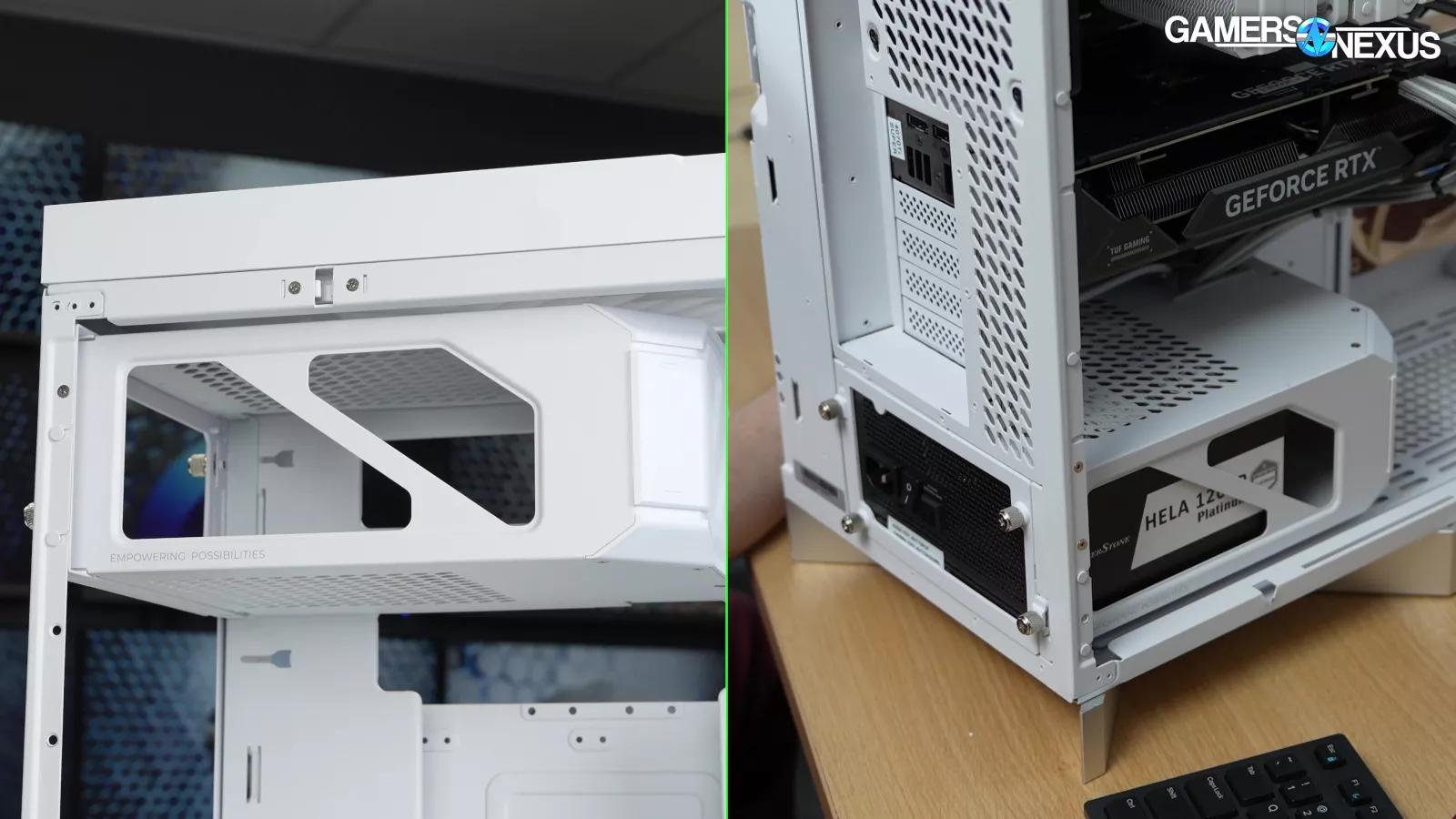
The PSU cage can be installed either above or below the motherboard: in the top of the case, the PSU can either pull air through the filtered top panel, or (as shown in the manual) pull CPU exhaust out of the case the old-school way.
As a result, the whole motherboard tray can be removed, which is actually pretty useful for installing and testing components outside of the case before committing. This is probably the best thing in the case.
Cable management space is cavernous at 63mm, so that’s good. There's no question that the L70 has enough space for cables. There are smaller quality of life touches as well, like the magnetic top panel, built-in GPU support, and the spring-loaded expansion slot clip (although all the expansion slots include screws anyway).
We don't have information yet on the L70 Air, but there are definitely cutouts for fans behind the glass front panel in the L70. Both the theoretical L70 Air and the existing L70 have hinged front panels that make it easy to access the inside of the case for quick adjustments without clearing your desk and taking the side panel off.
With the bottom PSU configuration, Tryx claims support for 420mm radiators simultaneously on the top and side mounts. The top radiator and fans would overlap part of the side mount, so tube routing would need to be planned accordingly, but the top mount in particular has a ton of space to work with as long as the PSU is installed in the bottom of the case.

Finally, Tryx draws a dotted line on the outside of the cardboard box for a cat door. There's nothing that makes this particular box a better cat toy than any other, but it's cute, so Tryx gets a point here. We actually liked that.

Tryx Luca L70 Thermals
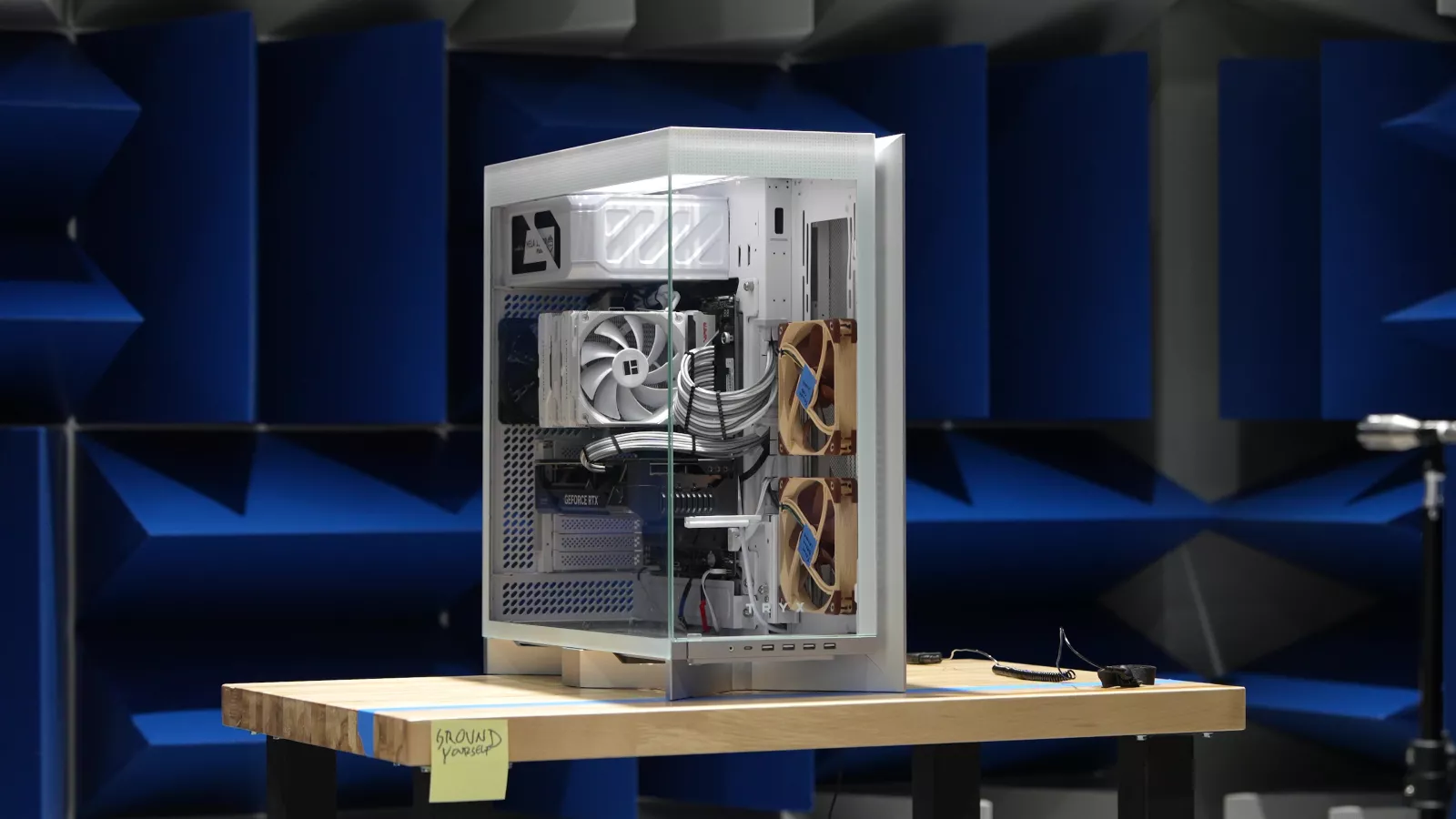
Although Tryx does sell fans, the LUCA L70 doesn't come with any. Our method of dealing with that is to run all tests with our standardized set of three Noctua fans (two 140mm intake, one 120mm exhaust).
For our baseline test, we ran the case as it shipped with the PSU at the top of the case. We kept the PSU fan-side-down as depicted in the manual, which means it should help with CPU thermals by pulling exhaust out of the case. The PSU's zero RPM mode is always turned off during our case thermal tests.
For tests with side intake through the aluminum side panel, we kept the hinged SSD mounting bracket open. For tests with bottom intake, we kept it closed.
Tryx plans to release a dedicated vertical GPU bracket for the L70 in Q4 of this year, but it doesn't exist yet, so we haven't tested it.
As for competitors, the Tryx is most similar to the over-the-top halo products from ASUS ROG (Strix Helios, Hyperion GR701) and Cooler Master ( "The Berserker" HAF 700, HAF 700 EVO), but it's been a long time since we reviewed one of those. Among the cases we have tested, the Lian Li O11D EVO XL has the most overlap and closest price, followed by the HYTE Y70 non-touch. We're thinking of big, pricey cases without stock fans that are designed to be conversation pieces: cases like Antec's C8 and Flux Pro and Fractal Design's Torrent are more competitive from a price and functionality perspective, but they don't look as crazy.
CPU Full Load Thermals - Noise Normalized

We chose the side intake configuration as a baseline in order to give the L70 the best possible chance. The two 140mm intake fans were positioned low in the case to get some active airflow under the GPU, and the 120mm was positioned as exhaust behind the CPU cooler as usual.
This first test is noise-normalized and for CPU thermals, with noise established at a matched 27 dBA threshold in our hemi-anechoic chamber. The average CPU temperature across all cores was 50 degrees Celsius above ambient, while the P-cores alone were 54 degrees over ambient. That makes it slightly warmer than the Y70, which averaged 49 degrees all-core and and 53 for P-cores in a similar side intake configuration with the same fans and at the same noise level. Despite being OK, the L70 is in company of some of the lower performers on this chart so far.
The O11D EVO XL under the same conditions was even better, up at 43 degrees all-core -- and that’s with the same fans at the same noise levels, so it’s as like-for-like as it can be. This is a test that favors traditional front-to-back airflow: the bottom-intake C8 is tied with the L70, while the new Flux Pro has a significantly lower all-core average of 41 degrees above ambient.
GPU Full Load Thermals - Standardized Fans

Now we’re moving to standardized fans in all tested cases on the chart, all set to 100% fan speed, with the CPU and GPU fans remaining controlled and fixed as always. This means every case on here has the same fans, which also means some cases -- like the Antec Flux Pro -- will be worse than stock, as we are reducing the fan count. The test is still useful for looking at standard airflow patterns in a controlled way and is one we run specifically because our audience heavily requested it.
With the baseline setup, average GPU temperature was 42 degrees Celsius above ambient with the memory junction at 48 and the hotspot at 55. Moving the PSU to the bottom of the case resulted in temperatures about one degree lower in each category, whereas keeping the PSU at the top and moving the intake fans to the bottom made temperatures significantly worse, with GPU averaging 47, memory junction 55, and hotspot 62 degrees above ambient. This is a massive increase and suggests that it may be best to only have one option.
The change may seem counterintuitive since the bottom intake slots are directly beneath the GPU, but those slots are far more restricted than the side intake ones, to the extent that one of the fans is basically useless.
Removing the central section of the aluminum base helped a little, lowering temperatures by 1-2 degrees versus unaltered bottom intake, but the side intake results remain far superior.
Using the baseline side intake numbers for comparison against other cases, the L70 actually did fairly well, with the Y70 averaging 41 degrees above ambient for the GPU (versus the L70's 42) and the O11D EVO XL averaging 44.
CPU Full Load Thermals - Standardized Fans

In the same standardized fan tests at full case fan speed, the CPU temperature averaged 45 degrees Celsius above ambient and 49 on the P-cores in the baseline configuration. The bottom PSU configuration had no significant effect on CPU temperatures: if we didn't already have a dedicated case fan for exhaust, using the PSU to pull hot air would have a more significant impact. Bottom intake was worse for CPU thermals (as it usually is with our test bench), with all-core rising to 50 and the P-cores to 54 degrees above ambient just because the fans are pretty far away from the actual cooler. As with the GPU temperatures, removing the central section of the base improved those temperatures by about one degree, but still not enough to match the side intake results.
The L70 doesn't compare as well on this CPU chart as it did on the GPU one, with the Y70 side intake averaging 43 degrees above ambient all-core and the O11D EVO XL side intake a step beyond at 41 degrees, a relatively large improvement.
In our standardized fan tests, side intake may work well for GPU thermals, but front intake is better for CPU thermals. For example, the Flux Pro averaged 38 degrees here, and almost all of our front intake results are below 40.
GPU Full Load Thermals - Noise-Normalized

Back to the noise normalized test and with stock case fans where present, the GPU averaged 43 degrees above ambient. That’s better than the O11D EVO XL side intake at 45 degrees and the Y70 side intake at 48 degrees. Memory junction and hotspot temperatures followed the same order. The other cases on this chart used their own stock fans if available, which means cases like the Torrent and Flux Pro that ship with serious out-of-the-box cooling gained back an advantage that they lacked in the standardized fan test.
CPU Full Load Thermals - Full Speed

Finally on the CPU, tested with stock fans where present and at full speed, the Tryx L70 lands far down on the chart. It’s at about the halfway point when tested with a bottom-mounted PSU and side intake, with two of three of the worst results secured at the very bottom, depending on configuration.
VRM & RAM Full Load Thermals - Noise-Normalized

Finishing the noise normalized testing, the average VRM temperature in the L70 was 33 degrees above ambient and the SPD Hub sensor on the DRAM averaged 27 degrees above ambient. That puts the L70 right in the middle of the chart, neither unusually good nor bad, and between the cooler O11D EVO XL side intake and the warmer Y70 side intake.
Tryx Luca L70 Conclusion

We like it when case manufacturers try something different, and the L70 is something different. But it still needs to nail the basics.
If performance is something you're concerned with, you should watch our Antec Flux Pro or Fractal Torrent reviews instead. That's not the L70's focus. It's possible to get decent airflow through the L70 if you don't rely on the bottom mount, but like the HYTE Y70, the performance only needs to be good enough to enable a cool-looking build.
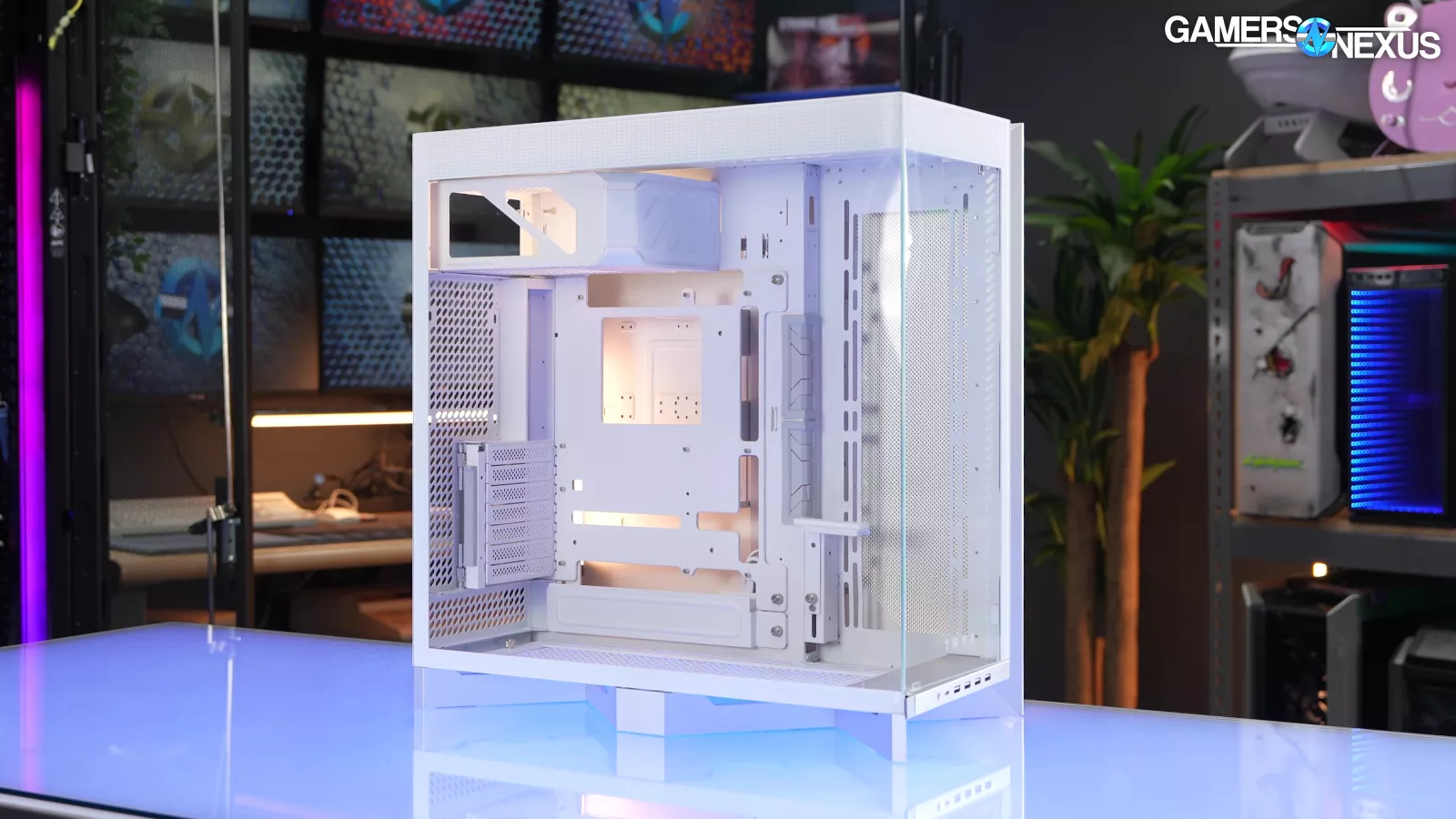
Looks are so subjective that we don’t want to comment on them much more than we already have. It’s really this simple: If you like the way it looks, and this goes for any case, then that’s all that matters as long as it ticks all the functional boxes. It doesn’t matter much what we think about the looks. This teeters somewhere in the void between “weird” and “cool,” depending on who you are, but one thing it definitely is not is “plain.” If you find that appealing, then great. Our biggest concern is its build quality, where we think the case simply fails.
We'd only recommend the L70 if you're dead-set on its appearance and you're willing to deal with inconveniences and problems we associate with far cheaper cases, like $200 cheaper. If you have your heart set on this because it fits some theme, and if you can put up with the rest, then Tryx is the only place you’ll get a case that looks like this.
The Y70 and O11D EVO XL are big and flashy too, but they're also way easier to build in and from tried-and-true design lineages.
We don't want to make it impossible for new companies to start up and try new things without all the established resources of a company like Fractal Design. We want to provide good feedback and encourage those companies to improve, and based on how responsive and helpful Tryx has been through this review process, we have hope at least that they might listen. At least on the comms side, Tryx has hired the right person for the job and someone we have faith in. We only know two of the Tryx people from previous companies, and we think both of them do good work. The hard part with a company is getting all those individual pieces to click together, and that only happens with time and practice. We’ll see how things go for Tryx.
While we can’t recommend this one, we hope to see the company refine its design and take this to heart. There are two ways to approach a review like this. Cooler Master, despite its issues with our H500P review initially, did eventually make massive changes that resulted in us fully recommending its fixed variations of that product. Hopefully Tryx launches a revision 1.5 of this case with some changes.
